Free Living Life After 50
July 2025
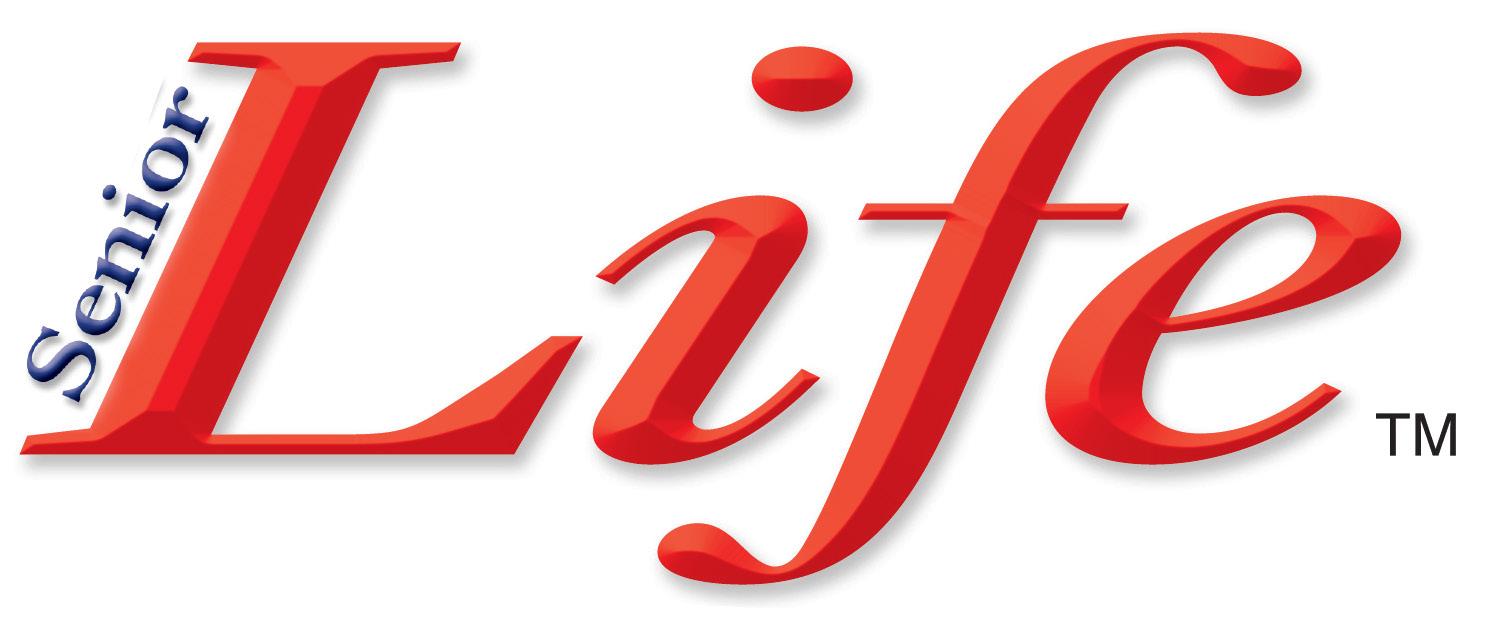




By ROD KING Feature Writer
Karen Moessner is a regular at Dupont Hospital. She shows up every Tuesday around 1 p.m., but she’s not there for blood work, X-rays or surgery. Instead she brings smiles that many times produces tears of joy. With her is her therapy dog, Finn, who is the one who really brings the smiles.
According to Bob Bergeron, president of the 108-member Three Rivers Visiting Dogs, the current membership of the organization have logged 26,000 visits to hospitals, nursing homes, public schools and colleges in Allen and surrounding counties.
“In fact, when you include retired members, the number of visits is over 50,000. Our members are making visits every day of the week but Sundays,” he said.
Research has shown the dogs have the ability to relieve stress by helping patients put aside their ills while interacting with the dogs.
“The dogs are a very good distraction. We hear from families of patients that loved ones who seldom speak, spoke to the dogs for the first time in many years. In addition, patients who were totally immobile show movement when petting the dogs,” he said.
Bergeron said it’s not uncommon to witness tears of joy by patients and family members alike.
Bergeron takes his golden retriever and labrador retriever on visits three to four times per week.
“Two to three times a week, we receive requests for special visits at churches and community events. We even get requests to go to area colleges to help relieve stress experienced by students during final exams,” he said.
Bergeron, who has had dogs most of his adult life, joined TRVD in 2003 and became president of the organization in 2022.
The University of Michigan graduate named his first golden retriever, Blue, and his second one, Maze. He got interested in therapy dogs through his wife, pediatrician Dr. Lisa Bergeron, who has long been an advocate for therapy dogs for children.

“The future of the visiting dog program is indeed promising and will become more common place as it pertains to the welfare of humans. They’re contribution in the medical arena is well documented. They’re credited with being able to detect seizures and diabetic episodes before they occur and stage No. 1 cancer,” he said. “Therapy dogs have also proved to be able to help lower patient’s blood
ON THE JOB
— Therapy dog, Finn, and owner, Karen Moessner, right, go to Dupont Hospital every Tuesday to bring smiles and tears of joy patients. Moessner has been taking therapy dogs to hospitals and nursing homes for the past 19 years. Finn brings smiles to Lori Resor, left, who is waiting for a friend at the hospital. Photo by Rod King.

pressure and reduce stress and anxiety.”
TRVD conducts its own dog and handler training. To become TRVD therapy dogs, they must take a class at the Byron Health Center on Beacon Street. As Bergeron puts it, “Some dogs have what it takes and others just don’t. We’re looking for excitable dogs because the people like them and get excited as well.”
They must have basic obedience training, like to be around people and get along with other dogs.
“They must also learn to become accustom to a variety of sights, sounds and smells so that they won’t be uncomfortable in many environmental situations and won’t react negatively,” he said.
Bergeron said golden retrievers and labrador retrievers

are the most common therapy dogs.
“But we have every type of dog from chihuahuas to great danes. It’s always interesting to see the shock factor when a great dane walks in the door. They’re among the most docile and friendly dogs,” he said.
“All of our therapy dogs are also family pets and our members are all volunteers,” Bergeron said.


By ROD KING Feature Writer
Whenever there’s a dedication, ribbon cutting, festival, market or other activity going on in New Haven, Councilman at-large Bob Byrd is present. He doesn’t have to be, but he said, “I believe that as a resident and member of City Council I should attend and support local businesses and events. Besides,” he added, “it allows me to meet many great local citizens.
“New Haven has been good to me my entire life and made a lot of great opportunities available to me. I know that the generation before me gave so much so I could have a great city to grow up in and I’m making it my job to give back” Byrd was born and raised in New Haven and graduated from New Haven High School where he lettered in football, basketball and track. His parents graduated from NHHS as did his wife, Sue, of 47 years (deceased), two daughters and a grandson. A granddaughter is attending the Intermediate School.
You could say that Byrd, who has lived in New Haven for 60 years, is a Bulldog through and through. And today he’s giving back to the community by serving its residents as a member of the City Council with service that extends over 21 years. It started as a firefighter/EMT with the Adams Township Volunteer Fire Department. Then he became a member of the Adams Township Advisory Board.
He still has close ties to the fire department and serves as chairman of the board of the East Central Fire and EMS Territory which he says is very important to him. In fact, he’s spent most of his adult life involved with the
fire department. He joined the department in 1975 and rose to the rank of captain and was involved in the formation of the first paid staffing of the Adams Township Fire Department on Meyer Road. When it merged with New Haven he was involved with the new station on Hartzell Road.
A core belief as it relates to emergency services is that when someone calls for help we get there quickly, are highly trained to provide care and that all firefighters, paramedics and police officers go home to their families safely after a shift.
Byrd served several terms on the City Council as fourth district representative addressing the need for additional affordable housing, maintaining the streets and roads and the addition of sidewalks and trails.
“Over the past couple of years, we’ve done millions of dollars of road repair in New Haven.”
“Another issue is the delays at rail crossings. Our objective is to shorten wait times at crossings and we’re investing in technology to help make that happen,” Byrd said.
Byrd also serves on the New Haven Board of Works and Safety, which he describes as a multi-purpose board with policy and administrative responsibilities covering a comprehensive range of activities. Its primary function is to direct policy in agenda submittals and document management for the Department of Public Works and Utilities pertaining to all city thoroughfare construction and maintenance, traffic engineering, street lighting and municipal water, sewer and storm water services.
“I enjoy being part of city government,” said Byrd, “but I wish more people would come to meetings to learn what is happening behind the scenes and provide input.”
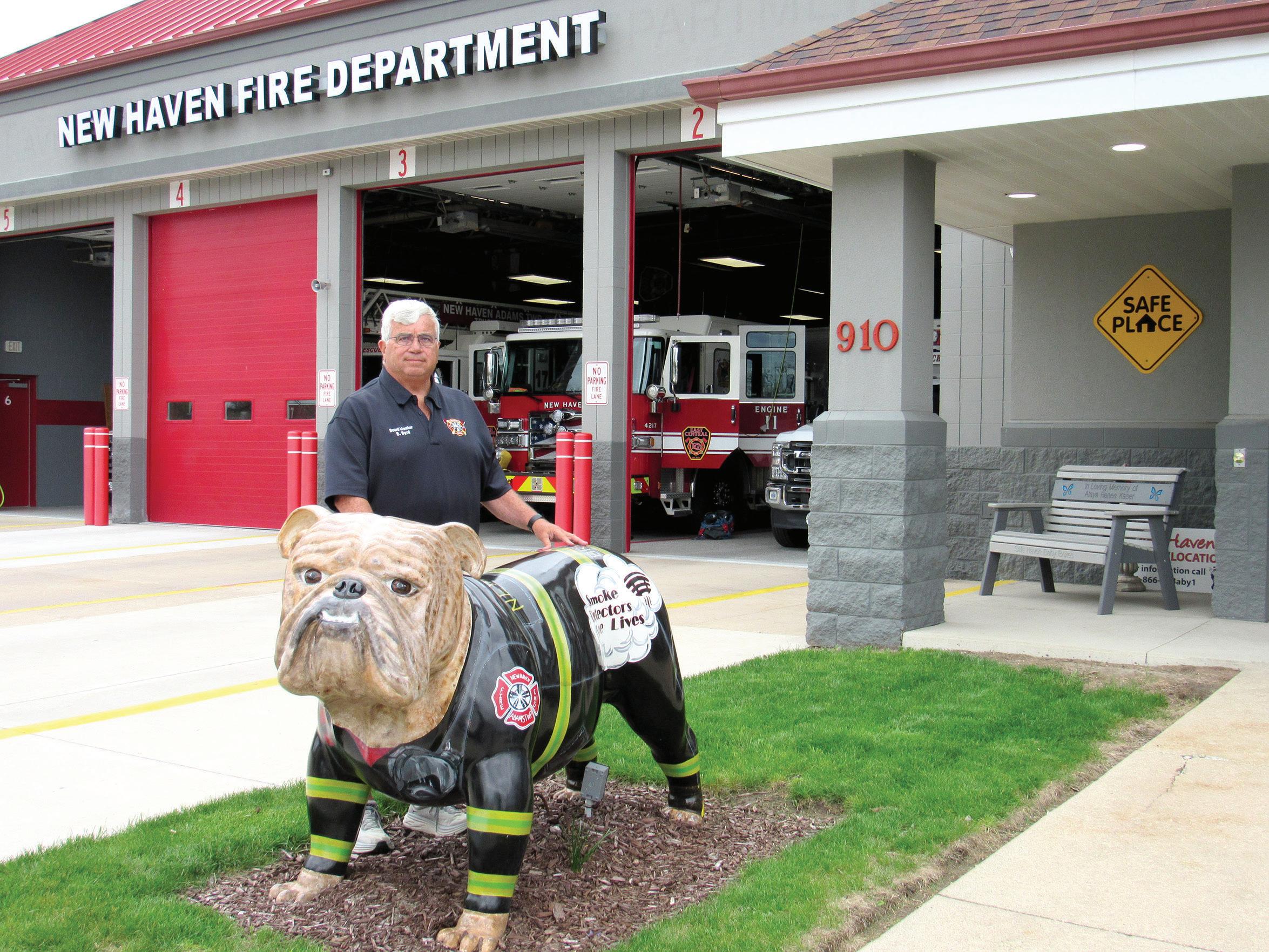
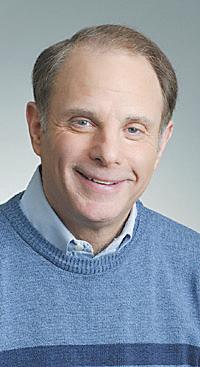
By DICK WOLFSIE
My wife has a huge walk-in closet off her bathroom. She has a shower, spa/bath, and several drawers and shelves for her toiletries and makeup. At least that is what she tells me. I’m not allowed in there, so I have no way of confirming this. We do not share a bathroom. Let’s put it this way: We have been happily married 43 years, and then there was the year we shared a bathroom.
The other day, I stood on the commode in my john to extract a nail from the wall. I fell, broke the toilet seat, and chipped the bowl when my hammer hit it. That meant I had to use Mary Ellen’s lavatory temporarily until I replaced the broken fixture.
Because she doesn’t trust me in her powder room, she accompanied me whenever I entered her restroom. This got very creepy as you can imagine. Author’s note: I am quickly running out of euphemisms for bathroom.
I had never shopped for a toilet before, so I wasn’t exactly sure how to begin. As you know, it is often tough finding help in these huge hardware stores. Spending more than 30 minutes walking up and down the aisle, I had already
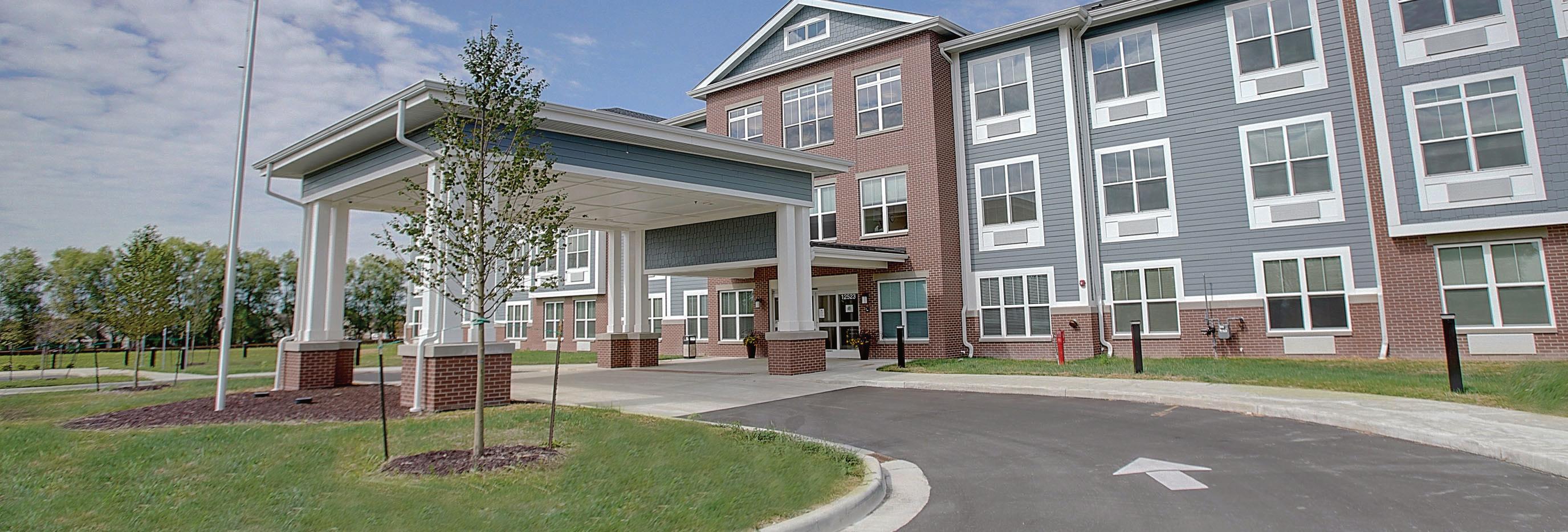



invested more time in the search than I had in picking out our new washer and dryer, or my wife’s engagement ring, or my wife for that matter (love at first sight).
One confusing thing was the toilets were way up high on the shelves. When’s the last time you looked up at a toilet? Don’t answer that. I did run into a few employees. They had some interesting responses to my plea for assistance.
“I don’t know anything about plumbing. I’m in power tools.”
“I’m sorry. I only work in aisle 23.”
“I’m sorry. I know nothing. I am 23.”
“I’m sorry, I can’t walk over there with you. I’m 93.”
“Oh, so you are looking for a toilet? Way in the back. Careful, there’s no lock on the door.”
The products had some intriguing sales pitches. One of the toilets had a sign that said: “Will flush a dozen golf balls.”
“That’s a stupid thing to promote,” I said. “Who would flush golf balls down the toilet?”
“You did last summer when you shot 34 over par?”
The sales guy asked me if I wanted a round or an oblong seat. I looked for a mirror to catch a peek over my shoulder to see what would fit best, but this will also be the guest bathroom, and our friends come in all shapes and sizes.
Some of the toilets were labeled “smart,” with prices in the thousands. They have several buttons and a remote control, but what they remotely control is still a mystery. I don’t want a smart toilet. I don’t want one that answers the phone, or is connected to Bluetooth, or gives me a weather report. I don’t want my bottom warmed or scented. I simply want my toilet to sit there.
And I promise to do the same.
In the late 1970s, TV’s “Happy Days” shone a spotlight on the fictional middle-class Cunningham family. The show was a ratings smash, and the writers loved the high-paying work it brought.
But things changed one day with an unexpected visit from Garry Marshall, the show’s creator. Marshall strolled into the writers’ office and proclaimed how Scotty, his 8-year-old son, had suggested the possibility of having a spaceman visiting the Cunninghams.
Garry then smiled, departed the room and left behind stunned silence.
Writer and story editor Brian Levant recalled, “We looked at each other like, ‘That’s the most horrible idea I’ve ever heard’.”
But the boss obviously wanted a script that would please young Scotty, and the boss is always the boss. Right?
A story concept was quickly created for inclusion in a forthcoming “Happy Days” episode. That broadcast, which involved a dream sequence involving Ritchie Cunningham (Ron Howard), featured an appearance by Mork, a goofy alien from the planet Ork who wanted to whisk Ritchie back to his home planet for study. Several actors — including Dom DeLuise— were offered
the Mork role, but nobody showed interest.
What to do?
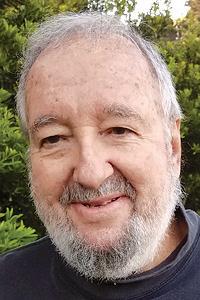
By RANDAL C. HILL
Ronny Hamlin, Marshall’s older sister and an associate producer on “Happy Days,” had recently seen an unknown stand-up comedian named
Robin Williams present a “spaceman” bit as part of a manic stand-up routine at a local comedy club.
Hamlin felt that Robin would be perfect as mega-weirdo Mork, and Williams was consequently summoned to the writers’ office.
Brian Levant recalled the meeting as “the most amazing run-through in the world,” with Williams reminding writers of the Marx Brothers, Charlie Chaplain and the Three Stooges rolled into one screwball. “The guy was on fire,” Levant claimed later.
When Williams made his appearance in a “Happy Days” episode during the program’s fifth season, viewers embraced his ditzy alien character, and it was quickly determined

that he deserved his own TV show. The result was “Mork and Mindy.” Williams was brought together with ex-model newcomer Pam Dawber to play Mindy, Mork’s friend and eventual love interest.
During the show’s threeyear run, an ongoing myth had Robin Williams ad-libbing all his lines on “Mork and Mindy.” The reality? During rehearsals, he could be a whirlwind of bril-
liant improvisation. But when the cameras rolled, Williams always stuck to the script.
At the end of each show, Mork reported to Orson, his Orkan superior, to explain what he had learned on Earth that week. Here is where the writers could really offer silliness for the viewers. Consider, for example, this conversation: Mork tells Orson about the punishment of being sent to
a prison on Earth: “This is a place where they give you food, they give you clothes, and they give you housing,” Mork explains. Orson declares, “This doesn’t sound like punishment. What do they do for pleasure?”
“People smoke cigarettes,” explains Mork. “They make you sick, they make you smell bad, and they make you cough.”
“Mork and Mindy” deserves a special place in TV history!
The Tri-Lakes Lions are holding a Fish and Tenderloin Fry from 4-7 p.m. or until sold out, whichever
comes first, Saturday July 12, at Tri-Lakes Lions Hall, 2935 E. Colony Ave., Columbia City.
This event is drive-through only. Attendees can buy meat or a meal for $15, and a quart potato salad for $7.
Whether

By ROD KING Feature Writer
Ruth “Mom” Wiegmann’s 88th birthday party at the Pearl Arts Center, June 17, turned out to be much more than she ever dreamed of. In front of 300 guests, she was

presented Indiana’s second most prestigious honor, the Distinguished Hoosier Award.
Fort Wayne City Councilman
Tom Didier made the presentation and sang her favorite song: “I Left My Heart in San Francisco.”
Her daughter, Phyllis


CORPORATE OFFICE
Wiegmann, initially applied for the Sagamore of the Wabash Award, but learned Gov. Mike Braun was restricting the number of those to just a few. So, she applied for the Distinguished Hoosier Award on the basis of Hoosier hospitality at its best. In the case of Ruth, her door was always open and there was always a seat at the table for someone in need or visiting from out of town.
Komet Hockey players, who were in Fort Wayne with no place to stay, roomed at her home and began calling her “mom.” Ruth was an avid hockey fan and was at the very first Komet game ever played here with her step-grandfather, Kenneth David. She continued housing players until 2001.
One of the letters her daughter received was from Komet player Guy Dupuis.
“I was blessed to stay at her home for a year-and-a-half (1991-1993). I was a 21-yearold Canadian just signed to play with the Komets. She was incredibly welcoming and full of joy. She was a tremendous cook (we bought groceries), and we had meals at her table every night. She even invited some other members of the team to join us. In addition, she was instrumental in introducing me to my wife of 28 years. Ruth is an exceptional human being and I’ve been blessed to have her in my life.”
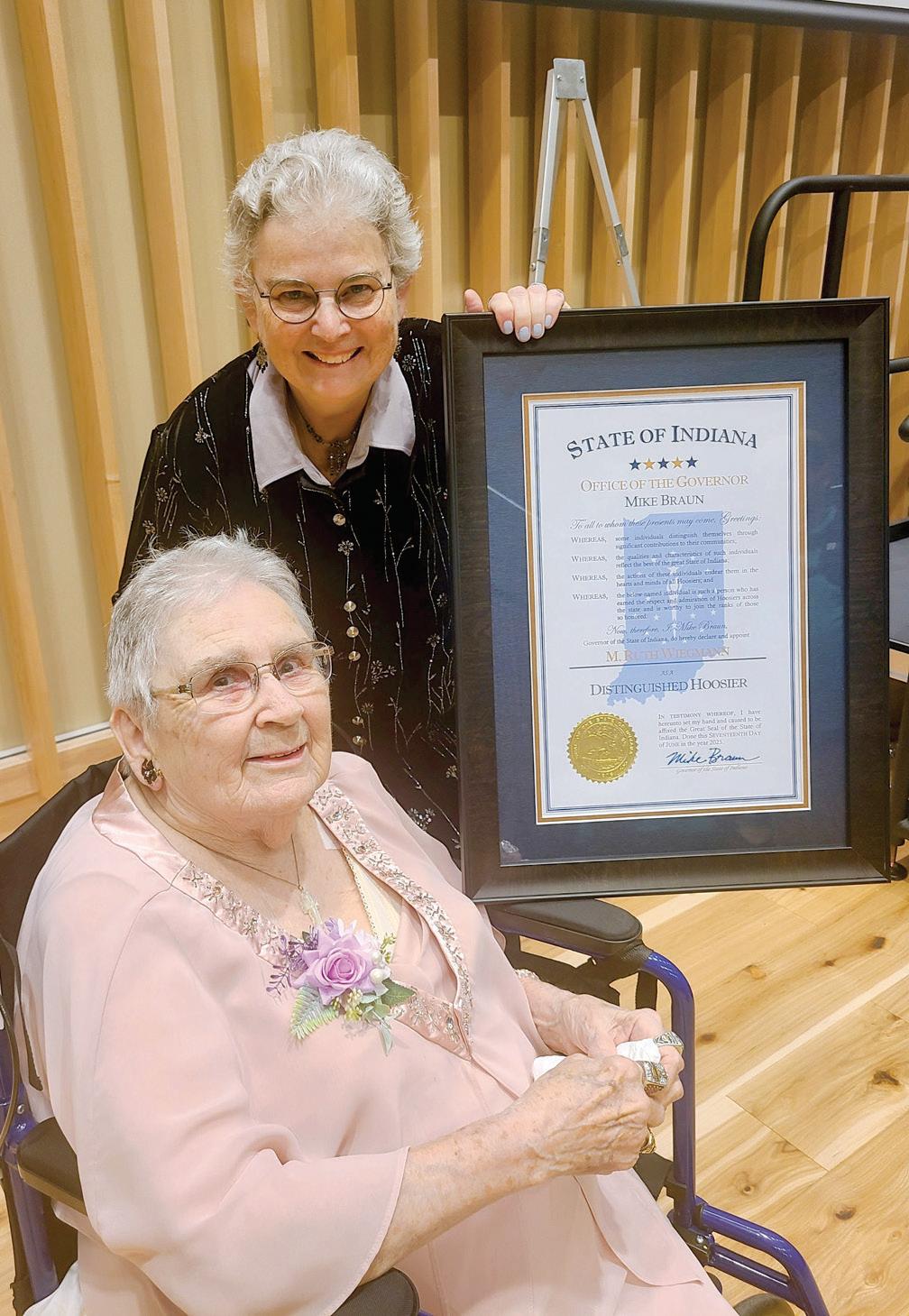
DISTINGUISHED HOOSIER Ruth “mom” Wiegmann, who received the Distinguished Hoosier Award on her 88th birthday, is shown here with daughter, Phyllis Wiegmann, who prepared the application and collected the supporting letters for the Distinguished Hoosier Award. Photo provided by Phyllis Wiegmann.


The Papers Incorporated, 206 S. Main St., P.O. Box 188, Milford, IN 46542, 574-658-4111 STAFF
Ron Baumgartner, Publisher rbaumgartner@the-papers.com
Annette Weaver, Business Manager aweaver@the-papers.com
Kristin DeVittorio, Director Of Marketing kdevittorio@the-papers.com
Deb Patterson, Editor-In-Chief dpatterson@the-papers.com
Phoebe Muthart, Editor pmuthart@the-papers.com
Account Executive Betty Foster slallen@the-papers.com • 260-494-9321
Jerry Long, Circulation Manager jlong@the-papers.com
Elkhart/Kosciusko Edition
Joseph
EDITORIAL DEADLINES
SUBSCRIPTIONS
Mailed subscriptions are available, prepaid with order at $37 for one year; and $64 for two years. (Select one edition.) Your cancelled check will serve as your receipt. To order a subscription, call 574-658-4111.
ADVERTISING
For advertising deadlines call your sales representative. The existence of advertising in Senior Life is not meant as an endorsement of any product, services or individuals by anyone except the advertisers. Signed letters or columns are the opinion of the writers, and not necessarily the opinion of the publishers. To advertise contact Betty Foster at 260-494-9321 or slallen@the-papers.com.
PRODUCTION
Senior Life is
or
Nearly 80 foster children called her “mom” between the years of 1964 to 1988 as did seven exchange students from around the world. She was also “mom” to 30 flames/kick soccer players, hosted 50 international sister-city visitors and housed three, Fort Wayne Fury basketball coaches.
German exchange student, Dirk Behrendt, resided at her home in 1984 and 1985. He wrote, “her generosity and fostering spirit had a steadfast impact on my life. My daughter, Shania, also became an exchange student in Fort Wayne experiencing the
warmth and generosity that “mom” so readily offered to all. Whether through her extensive volunteer work or her natural ability to inspire those around her, she is truly an exceptional person.”
One of Ruth’s 78 foster babies, Elizabeth Trinter-Crum, wrote to say her first 80 days of life were spent with the Weigmanns.
“I was adopted in 1972 but didn’t learn that those first months were spent there. Thirty years later, I trekked to Fort Wayne to meet ‘momma” Ruth and her husband, Harold. The instant I arrived, I was graciously taken in. It’s re-
markable to think a woman so selfless and caring could give 78 lives the best beginning possible,” Elizabeth Trinter-Crum said.
Three hundred fifty members of the Northrop High School Marching Band referred to her as “mom” when she was in charge of uniforms, transportation, logistics and finances for the award-winning musical ensemble.
Phyllis Wiegmann said she spent most of February and March this year writing the application and gathering the testimonial support letters with the help of friends, Jerry and Barb Bailey.
Cancer Services of Northeast Indiana held the annual Ribbon Walk May 3. The fundraising walk raised $120,001 to help local people with cancer. All donations stay local and directly support families throughout northeast Indiana.
That morning, more than 500 community members attended the event to honor cancer survivors in their lives or remember loved ones, who passed away from cancer.
Funds raised will help thousands of families who will
be impacted by cancer this year. Cancer Services offers a variety of practical, emotional, and financial supports, many available at no cost regardless of income or insurance status.
“This year, Ribbon Walk raised the most amount of money it ever has, and we have every donor and walker who joined us to thank for that success,” president and CEO Dianne May commented. “Thank you also to the dozens of volunteers who helped us get ready and the generous local
businesses who sponsored the event. Together, the community is ensuring that people with cancer don’t need to face it alone.”
Save the date for next year’s Ribbon Walk, which is May 2, 2026.
Cancer Services of Northeast Indiana helps people who live in Allen, Adams, DeKalb, Huntington, Kosciusko, LaGrange, Noble, Steuben, Wabash, Wells, and Whitley counties.
For more information, visit cancer-services.org.
Blast to the Past! —
During the first half of the 1970s, the Bee Gees (“Brothers Gibb”) were floundering.

featured some of the Gibbs’ lyrics unfolding with the stutter gimmick. But he did want a title change from “Drive Talkin’” to “Jive Talkin’.”
By RANDAL C. HILL
“We didn’t know where we were going,” admitted leader Barry. “We ended up doing dreary ballads. That was totally wrong, but we seemed to be stuck in that mode.”
What was needed was a new outlook. The singers’ friend Eric Clapton urged the brothers to move from Los Angeles to Miami, where exotic music and a thriving club scene offered a profound change of pace. After the lads relocated, Atlantic Records’ producer Arif Mardin scheduled them to record at Miami’s Criteria Studios.
On their daily drive from Miami Beach to the downtown studio, the brothers crossed the 4.4-mile-long Julia Tuttle Causeway. As they rolled over the road seams, the tires of the Gibbs’ car throbbed with a steady “chunka chunka” rhythm.
One day, Barry’s wife, Linda, remarked, “Hey, listen to that noise … it’s our ‘drive talkin’.” Barry chuckled and began improvising “D-D-Drive talkin’,”…
Mardin loved the idea of creating a dance single that
Maurice Gibb later recalled, “Arif went, ‘Do you know what jive talking means?’ And we said, ‘Well, yeah, it’s, you know, you’re dancing.’ And he says, ‘No, it’s a black expression for (deceitful talk).”
Some music critics had often dismissed the group as merely a vacuous pop-music machine, even though the trio’s recordings had always featured an element of soul, especially in the way the brothers bounced their high-pitched voices off each other when they recorded.
In creating “Jive Talkin’,” the Gibbs discarded the delicate singer/songwriter language of their catalog and replaced it with the kind of hip lingo heard in numerous soul hits of the day. In this case, we hear about a man grown tired of his girlfriend’s deceptive ways:
“J-J-Jive talkin’, you’re telling me lies
“Jive talkin’, you wear a disguise
“Jive talkin’, so misunderstood
“Jive talkin’, you’re really no good”
Fueled by a heavily muffled “thump” common in later disco hits, “Jive Talkin’” offered a stomping dance beat layered with a scratchy rhythm guitar, catchy keyboard stabs and an irresistible synthesizer bassline. The result was a crossbreeding of pop-music

hooks and hip soul.
To introduce radio programmers to the “new” Bee Gees, Atlantic Records’ staff mailed the “45” in a plain white sleeve with no explanatory information, as they didn’t want people to dredge up preconceptions about the trio’s prior works.
Released on Atlantic’s RSO label, the tune caught fire and shot to the peak of the Billboard Hot 100 chart, where it reigned for two weeks.
The success of the single allowed the lads to get a jump on the emerging genre of disco music, a captivating sound ex-
By MICHELLE M. WALTERS, RSSA, PHR, CHRS, CCWS, CSIS
Executive Vice President Health Insurance Shop
A broken hip, a knee replacement, a cancer diagnosis. None of these are desirable issues to face, but if we do, why wouldn’t we want rehab in the comfort of our own home if possible?
Home health care services have grown in popularity over the last decade or so due to the advancements in health care and treatments that do not necessarily require in-patient care. Home health care agencies have multiplied to accommodate the needs of our aging population. Designed to help you recover from illness or injury and regain your independence sooner than later.
Traditional services provided by home health care agencies include, but are not limited to, skilled nursing, home health aides, physical therapy, occupational therapy, speech therapy, pain management, medication management, wound care, infusion therapy and psychiatric services. Keep in mind that home health care is not a service designed to help individuals with housekeeping, grocery shopping, etc. and does require that individuals experience a reduced capacity to perform activities of daily living.
Insurance companies have also responded to the growing need for home health care by offering insurance policies that reimburse the policyholder for expenses incurred by utilizing home health care services — in many cases, without regard to what other insurance plans may pay for these
services. Like any other form of insurance, it is always best to plan for the worst by securing this type of coverage well before the need arises.
If you are interested in learning more about home health care insurance plans, call our office at (260) 484-7010.
ploding from urban black and gay dance clubs and into the mainstream.
“Jive Talkin’” has a place in
“Comfort Keepers was an invaluable asset in my toolbox regarding my mother’s home healthcare requirements. I was able to go to work and concentrate on other aspects of my mother’s healthcare needs. It gave me a “peace of mind” feeling on a daily basis knowing that their qualified staff would handle things at mom’s house and keep me updated. Comfort Keepers is a local outstanding healthcare organization; I would recommend them for any in-home healthcare needs”
Robert G.R. Son of client, Fort Wayne
recording history as the only million-selling disc to be inspired by a drive across a long Florida bridge.
“Comfort Keepers is an outstanding healthcare organization in Fort Wayne and surrounding areas. Their professional staff worked with my son to set up a well-balanced healthcare plan that allowed me to stay at my own home and enjoy my later years. Thus, I was able to do everyday activities on my terms. They helped me with personal hygiene needs, light housework, meal preparation, and medication reminders. They treated me like family.”

Client, Fort



Remembering special lives for more than 95 years.
Generations of Fort Wayne families have trusted us to craft lasting memorials for their loved ones. Our in-stock monuments can be completed and installed within 45 days. Ask us for full details.

Somewhere along your journey, you will begin to embrace the change after the loss of a loved one or a sudden change in your life. It starts with that feeling in your gut; as singer Peggy Lee put it, “Is That All There Is?” There has to be more to life. The gut feeling that you have more to do with your life and much more to offer is there within you, waiting patiently to be acknowledged. It may have been there for years but you have ignored it. Then you have that moment when your mind realizes what your gut has been trying to tell you. This is your epiphany, so to speak. The legend goes that Sir Is-
sac Newton was sitting beneath the tree when an apple fell and struck him on the head, sparking the a-ha moment and discovery of gravity. That was the moment of his epiphany; he realized what the gut had been telling him. Newton took his moment and shared it with the world. My epiphany came four months after the loss of my wife when I realized I had to embrace the change in my life and move forward.
Once you realize what the gut tells you, it is time for your heart and soul to take over and find your new self. The time has come to reinvent yourself or refurbish/remodel yourself.
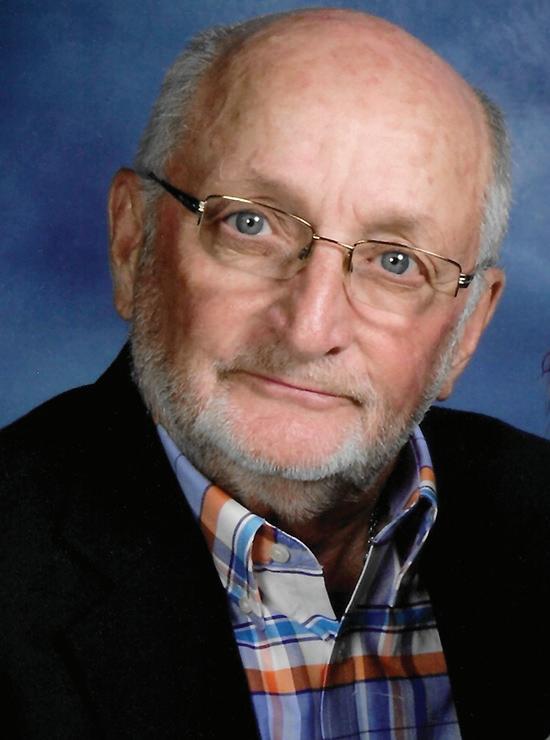
It is time to move forward with your new life. To some, it may
be a new career, going back to school; others, simply writing down their thoughts or renewing their faith, offering their time and treasure to a worthy cause. It may be as simple as expanding your horizons with new hobbies and interests. If you were never a reader, start reading, join a book club or go to the theater and concerts. These things will change and enhance your life, introducing you to new experiences and friends. Writing the book “Balloon in a Box, Coping with Grief” opened up a whole new life for me. I became an author and a speaker, leading to hosting the podcast “Senior
Talk Michiana.” Change can be complicated. While it is essential to move forward, it can be uncomfortable, especially if it feels out of control. To move forward and embrace change, we must first take control. Finding yourself and that there is more to life is a three-step process. First is that gut feeling, and then your mind understands that feeling. Then, you must open your heart and soul and allow God to lead you on your new life journey. Making the changes won’t be easy, but it will be well worth it. Listen to your soul; listen to him. He will lead the way.
By DAWN SELKE Chief Experience Officer Paradigm Health
Paradigm Health is redefining hospice and palliative care across Indiana with a mission rooted in “Hoosiers caring for Hoosiers.” Now serving residents of Allen and surrounding counties, Paradigm brings comfort-focused care to individuals and families right where they are — at home or in senior living communities.
With local offices in Fort Wayne, Paradigm offers personalized hospice services that emphasize quality of life, dignity and emotional and spiritual well-being. The interdisciplinary care team includes nurses, social workers, chaplains and therapists who tailor support to each patient’s unique needs.

Paradigm also leads the way in community-based palliative care, helping individuals manage serious illness alongside curative treatments. The approach reduces stress, controls symptoms and ensures seamless coordination with a patient’s existing doctors. They were the first in the nation to receive ACHC accreditation for this model of care.
Serving Allen and surrounding counties from Fort Wayne, Paradigm is known for quick response times, 24/7 support, and a compassionate team who walks with families every step of the way. Services include grief support, veteran-specific care and even music therapy to enhance comfort and joy.
Whether you or a loved one is facing a chronic illness or nearing life’s final chapter, Paradigm Health provides expert care with a personal, local touch.
Contact Paradigm Health in Fort Wayne at (260) 247-6500 or to learn more, visit myparadigmhealth.com.

Greencroft Communities has announced the appointment of Shauna Shafer as executive director of Golden Years Homestead.


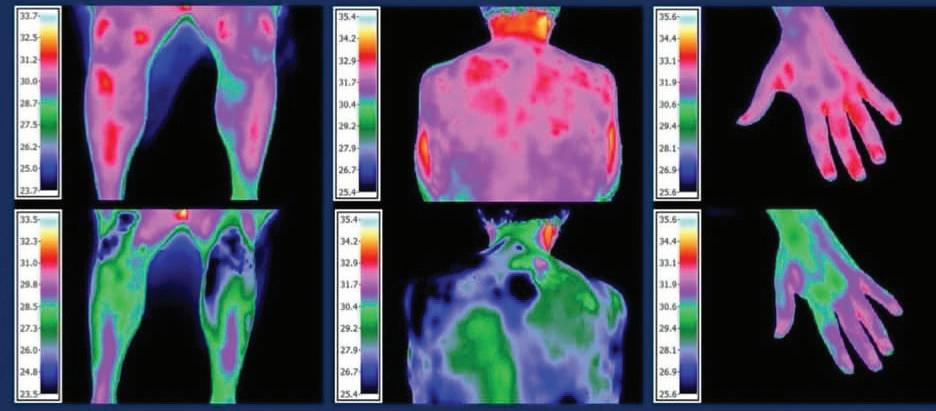
Shafer brings more than a decade of senior living leadership experience to the role, along with a strong background in education, regulatory compliance, and resident-focused care. Most recently serving as executive director at Life Care Center of Rochester, Shafer has a proven track record of enhancing quality standards, increasing occupancy, and leading with excellence.
Prior to that, she served for six years as administrator at Lutheran Life Villages, Anthony Boulevard, where she led a 142-bed campus offering assisted living, skilled nursing, memory care, and long-term care. Under her leadership, the community achieved a consistent five-star rating, maintained agency-free staffing, and operated at 98% occupancy.
“We are thrilled to welcome Shauna and the wealth of experience she brings to Golden Years,” said Hugh Davis, president and CEO of Greencroft Communities. “Her passion for quality care, operational excellence, and team development makes her an outstanding fit for this role.”
Shafer holds a master of arts in education in leadership and supervision and a bachelor of
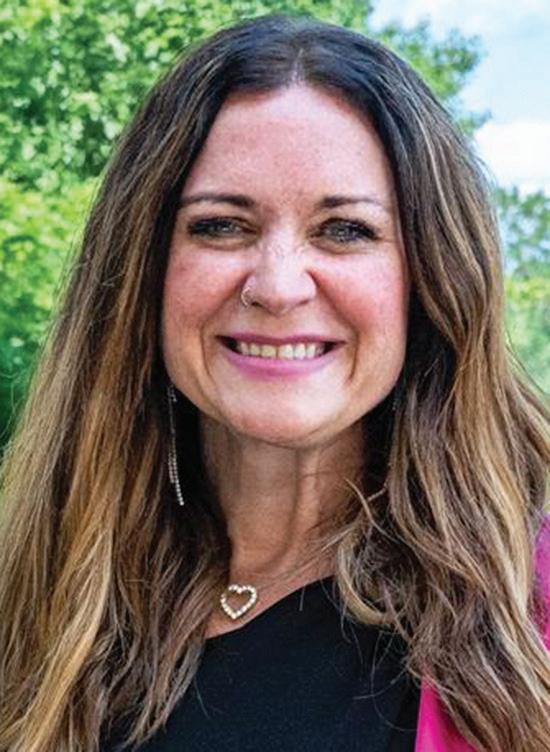
science from Ball State University. She is a licensed health facility administrator, LEAN Six Sigma Green Belt, certified fall prevention trainer and an experienced preceptor for Administrators-in-Training.
Golden Years Homestead, 3136 Goeglein Road, Fort Wayne, is an affiliate of Greencroft Communities of Goshen. The campus is home to over 200 residents in a variety of living options, including independent living, assisted living, skilled nursing care, memory care and short-term rehabilitation.
For more information, visit Greencroft.org.
Q. Is there a service to help me with my downsizing move?
A. Wanting to downsize from your home to a retirement community can be an overwhelming experience. Many times people want to move, but end up not doing so because of the many things that must be done.
A few comments that I have heard over the years include:
1) I have to spend money to fix up my home before I sell it.
2) My attic and basement are full of stuff; I will have to have a garage sale.
3) I have to pack and move all of my belongings.
Looking at this list of concerns would cause anyone to just say “Forget It!”
This is where we can help!
Our services include selling your home as-is in 30 days for your price, selling your unwanted


Tim McCulloch, Owner
for
& more.
Our firm is highly recommended by many of the leading retirement communities in the Allen County area due to client satisfaction.
If you are thinking about making the transition to retirement living, call me at (260) 441-8636. My free analysis will give you the information you will need to make a better decision for yourself!
Sincerely, Timothy McCulloch


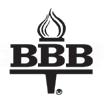
A. Unequivocally – NO!
Most insurance policies include a component of commission, whether it be Life Insurance, Health Insurance, etc. Choosing to work with a broker gives the consumer the opportunity to review multiple insurance options without having to talk to multiple agents or insurance carriers. If the broker writes a policy of insurance, a portion of the commission built into the policy is shared with the broker with no impact on the cost to the policyholder.

When choosing an insurance broker, you’ll want to find one that has a good reputation for putting the client first and one that is available to help year-round. You’ll also want to work with a broker that contracts with the majority of the carriers available in your area to avoid missing out on any of your options. Want to work with an established broker for your Medicare options? Give us a call at (260) 484-7010. 3609 Lake Avenue Fort Wayne, IN

In our increasingly digital world, estate planning must now include online assets. Seniors often have photos, bank accounts, email, social media, and even cryptocurrency tied up in the digital realm. Without instructions, loved ones may face frustrating barriers, lost memories, or unexpected costs when trying to manage these accounts. Begin by taking inventory—list every digital account, login, and password, including cloud photo storage, email, subscriptions, and cryptocurrency wallets. Next, appoint a digital executor, a trusted, tech-savvy person charged with carrying out your wishes online. Then, specify your instructions: do you want accounts deleted, memorialized, or passed to family? Do you want sentimental photos preserved or financial assets transferred?
Include these digital directives in your

A. Caring for a loved one with dementia can feel overwhelming – but you don’t have to face it alone. On July 01, 2025, AIHS will open a GUIDE clinic at 3003 Lake Avenue, Fort Wayne, IN 46805.

will, trust, or power of attorney. This gives your executor legal authority to access accounts. Also, update any platform-specific “legacy contacts,” such as Facebook or Google’s Inactive Account Manager. By taking these steps—inventory, executor, clear wishes, legal authority—you ensure your digital life is handled with care, reducing stress and preserving cherished memories for your family.

Guiding an Improved Dementia Experience (GUIDE) is a new program offering ongoing support focused on improving the quality of life of individuals living alone with mild to severe dementia and their caregivers.
Participants in the GUIDE program receive the following services provided by the GUIDE care team:
• Personalized support to help the participant stay home
• Direct communication with a Care Navigator who provides ongoing caregiver education and support
• Annual clinical assessments and dementia symptom management provided by a Nurse Practitioner
Zolman GUIDE Adult Gerontology Nurse Practitioner
Interested in GUIDE? You or your care recipient must be on Medicare Part A & B and have a potential diagnosis of dementia or be exhibiting signs of cognitive impairment.
Don’t wait to get the support you and your loved one need.
Visit www.agingihs.org/GUIDE or call the GUIDE direct line at 260-999-4106 to check your eligibility and take the first step toward improving your dementia care experience.
Editor’s note: Send listings of events, for nonprofit organizations only, to Senior Life, P.O. Box 188, Milford, IN 46542, or email Editor Phoebe Muthart by the 20th of every month at pmuthart@the-papers.com. With the listing, include the contact person, area code and phone number.
—o—
EAA Chapter 2 Sandwich
Lunch will be held from 11 a.m. to 2 p.m. Saturday, July 12, at Smith Field Airport, Hangar 2, 426 W. Ludwig Road, Fort Wayne. This annual fly-in/drivein sandwich lunch attracts a wide variety of aircraft and classic and collectible cars. Sandwich, either sloppy Joes or chicken, with chips, dessert and drink are served. Admission is free. Lunch donations will be accepted for the Youth Aviation Training Scholarship. Collector/ classic cars to show will receive a dash plaque; supplies limited.
EAA Chapter 2 is a 501(c)(3) organization. Visit Facebook orwww.eaa2.org.
—o—
The Central High School Alumni Association’s back-toschool event will take place from 11 a.m. to 2 p.m. Wednesday, July 16, at Central High School/Anthis Career Center on
Barr Street; take the outdoor main stairs up to the main door, because it is meeting in a new location due to construction. Call or text Barbara Schoppman at (260) 438-7162 or bjs4025@gmail.com to make a reservation. When making your reservation, let her know if you will need assistance with the stair steps.
—o—
The Huntington County Community High School Class of 1967 is having its second annual luncheon from noon to 4 p.m. Saturday, Sept. 27, at the American Legion Post 85, 1410 S. Jefferson St., Huntington. Reservations: $15 per person. Send to: Diana West, 4124 Westbury Drive, Fort Wayne, or email her at dkfrance2002@ yahoo.com.
—o—
Woodlands Senior Activity Center
For more information, call (260) 248-8944 or visit whitleycountycouncilonaging.org. The center is located at 710 Opportunity Drive, Columbia City.
9 a.m. Wednesday, pixie bingo. 9-10 a.m. Monday, Wednesday and Friday, line dancing.
9 a.m. Tuesday and Friday, 12:30 p.m. Thursday, euchre.
9 a.m. Tuesday, Bible study
with Cheryl.
9 a.m. Thursday, craft and chat
10-11 a.m. Monday, Wednesday and Friday, chair exercise. Noon Tuesday, dominoes. 12:30 p.m. Wednesday, hand and foot card game.
1 p.m. Tuesday, Bible study with Bob.
—o—
McMillen Park Community Center
For information, visit fortwayneparks.org or call (260) 427-6000. The center is located at 3901 Abbott St., Fort Wayne. Pickleball, 9 a.m. to 2 p.m. Monday to Friday.
Open gym, 9 a.m. to 2 p.m. Monday through Friday.
Adult open gym, 6-8 p.m. Monday through Thursday.
Adult yoga, 6-7 p.m. Tuesday and noon to 1 p.m. Wednesday. Volleyball, 6-8 p.m. Monday. Badminton, 6-8 p.m. Tuesday. CardioFit, 6:30-7:30 p.m. Monday and Thursday.
Essential steps, 5:30-6:30 p.m. Monday and 6-8 p.m. Wednesday.
Yoga for seniors, noon to 1 p.m. Wednesday.
Yoga for adults, 6-7 p.m.
Tuesday.
Men’s basketball league, 6-9 p.m. Thursday.



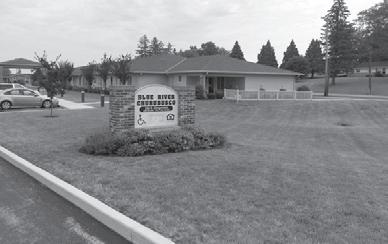



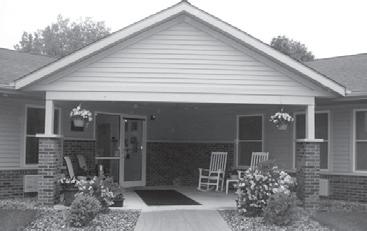




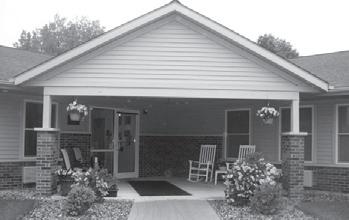
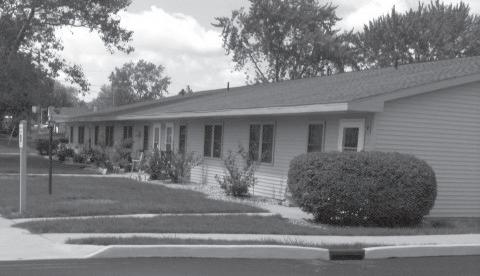







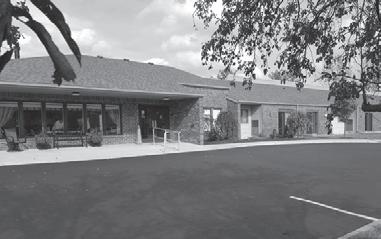


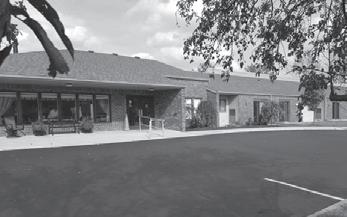





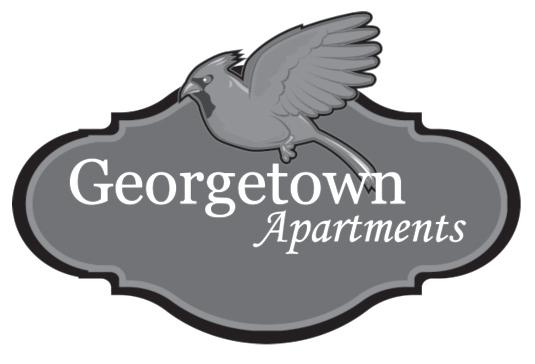
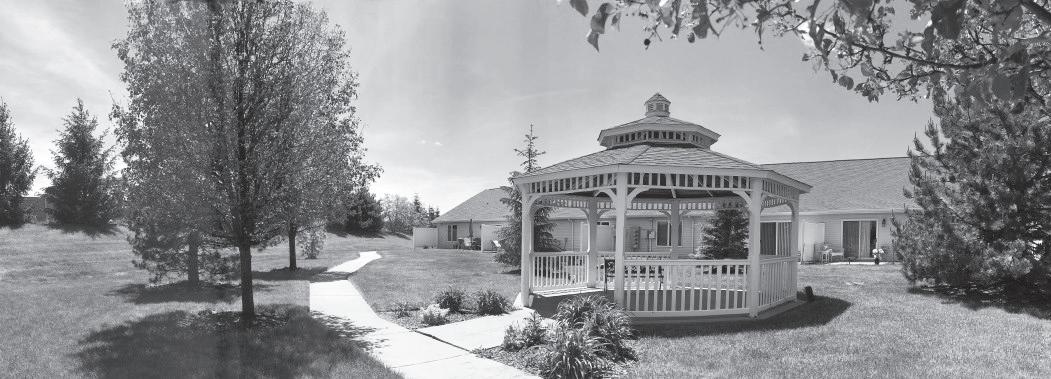
By LORETTA KOSLOSKE Ridership Specialist Hoosier Valley Railroad Museum
The Hoosier Valley Railroad Museum, located in North Judson, will run diesel train excursions for our annual Civilians & Soldiers in History Day on Friday evening, July 18, and all day Saturday, July 19. Passengers have their choice of riding in open-air sightseeing cars, a vintage coach or first class in a former Monon business car while rolling down the tracks through the Northwest Indiana countryside. Train excursions are round-trip from the depot and travel about 5 miles to the Kankakee River at English Lake, before returning to North
Follow the Pipes, presented by the Fort Wayne History Center and the Fort Wayne Chapter of the American Guild of Organists, will be presented at Fort Wayne churches and Embassy Theatre, July 15-17.
This free event is a self-guided tour with participants providing their own transportation. They can visit locations each day to hear the unique sounds of that church’s instrument. Concerts and/or demonstrations are scheduled at the top of each hour during the course of the daily events with 15 to 30 minutes travel time between locations depending on the organist’s choice of music.
Judson. The total length of each trip is approximately 45 minutes. Ticket prices begin at $14. Purchasing tickets at hoosiervalley.org is recommended, as seating is limited.
Numerous displays from various eras of U.S. History will be on the museum grounds, where admission is always free. Military and civilian reenactors will explain displays, answer questions and participate in scheduled demonstrations. In addition, HVRM has a restored World War II Pullman Troop Car. Stroll around the grounds to see one of the largest museum collections of working railroad signals and all types of rolling stock, engines and memorabilia of a bygone era.
Regular Saturday train excursions continue through September, including Ice Cream Trains. The fall brings Pumpkin Trains and Santa Trains run in late November and December. Times and prices for special events vary from regular train excursions. Seating is limited and it is recommended to purchase tickets in advance before excursions sell out.
HVRM is an all-volunteer, not for profit organization dedicated to the preservation and education of railroading history. Special group events

People attending should consult a map for directions and perhaps the city’s website for road closures. Upon arriving at the church, attendees should enter through the door closest to the parking area or as signs designate the door to enter.
The 2025 schedule is:
Tuesday, July 15
1 p.m. at St. Charles Borromeo Catholic Church, 4916 Tier Road, Tim Robison, organist.
2 p.m. St. Peter’s Lutheran Church, 7710 E. State Blvd., Tim Degen, organist.
Wednesday, July 16
1 p.m. Plymouth Congregational Church, 501 W. Berry St., Maestro Robert Nance, organist; enter through the office door, which is handicap accessible.
2 p.m. First Presbyterian Church Chapel, 300 W. Wayne St., Kathy Miller, organist.
3 p.m. Trinity Episcopal Church, 611 W. Berry St., Noah Vancina, organist.
Thursday, July 17
7 p.m. The Cathedral of the Immaculate Conception, 1122 S. Clinton St., Michael Dulac, organist.
8 p.m. Embassy Theatre, 125 W. Jefferson Blvd., Cletus Goens, organist.
Any last-minute changes to this schedule can be found at fortwayneago.com.

(including school groups) can be arranged by contacting the depot.
Visit the Hoosier Valley Railroad Museum website at hoosiervalley.org for a complete schedule of events. Order tickets at hoosiervalley.org or call the depot at (574) 896-3950 on Saturdays.



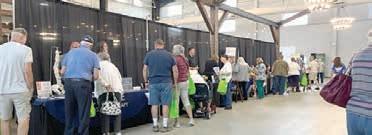
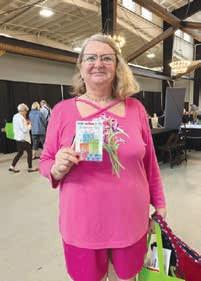





By ROD KING Feature Writer
To be a good hospital chaplain one must have a tremendous amount of empathy. In other words, a chaplain must be able to project his or her personality into that of another in order to understand the person better, share in their emotions, thoughts to relate to the feelings of others.
That’s exactly what Jim Dohrmann, one of four chaplains at Dupont Hospital, does on a daily basis in serving patients with serious or terminal illnesses and their loved ones.
“It’s a calling to be able to serve God and his creations. I particularly like one-on-one time spent with patients in an effort to not only console them but to offer a Biblical prospective to help them understand how they are seen in the eyes of God,” he said.
When he receives a call to go to a patient’s room, he first talks with the nurses who have been attending to that person so I can understand and be aware of the situation without having the individual go all through the painful details again.
“Unlike a pastor with a congregation he has known for many years, a chaplain only has a limited time with patients. And
where a pastor’s biggest concern is about the individual losing his or her faith, we are dealing with the loss of life. It’s a high anxiety atmosphere. That’s why I like to be prepared in advance because we have such a short time with the patient,” he said.
Dohrmann refers to his work as triage. He said that though he works primarily with individuals of the Christian faith, he has counseled persons of other religions. Most of them, however, request a representative of their own faith. He added that he seldom gets a call from anyone who just wants to talk with him about Jesus.
“I try to provide comfort because most individuals have concerns about leaving family behind, unfinished business and the matter of their mortality. In other words, they want to know what is going to happen to them and about eternal life. And, they want to know how they are seen in the eyes of God.”
The Fort Wayne native and Concordia Lutheran High School graduate went on to Indiana State University majoring in psychology before taking a position at Charter Beacon Behavior where he worked as a counselor for five years. He stepped away from counseling for a dozen years with North American Van Lines
and 16 years as a sales representative with Eli Lilly.
Dohrmann retired to take care of his wife of 45 years, Jill, who was battling cancer. After she passed, he couldn’t see himself sitting around in front of the television set so he sent a resume to Dupont Hospital.
“They called me in for an interview and offered me the job on the spot,” he said.
Though he’s only been a chaplain at Dupont for two years, his experience covers 20 years including earning master’s and doctoral degrees in Biblical and crisis counseling from Trippe Bible Institute in Marion, N.C. He did Biblical counseling at Holy Cross Lutheran Church and School.
Dohrmann said being a chaplain and dealing with death on a daily basis is not a job for everyone, he is grateful to be able to serve and to provide solace to patients and their families.
PROVIDING SOLACE Dupont Hospital Chaplain Jim Dohrmann has been providing solace and counseling to terminal patients and their families for the past two years. He also offers a Biblical perspective to help them understand how they are seen in the eyes of God.
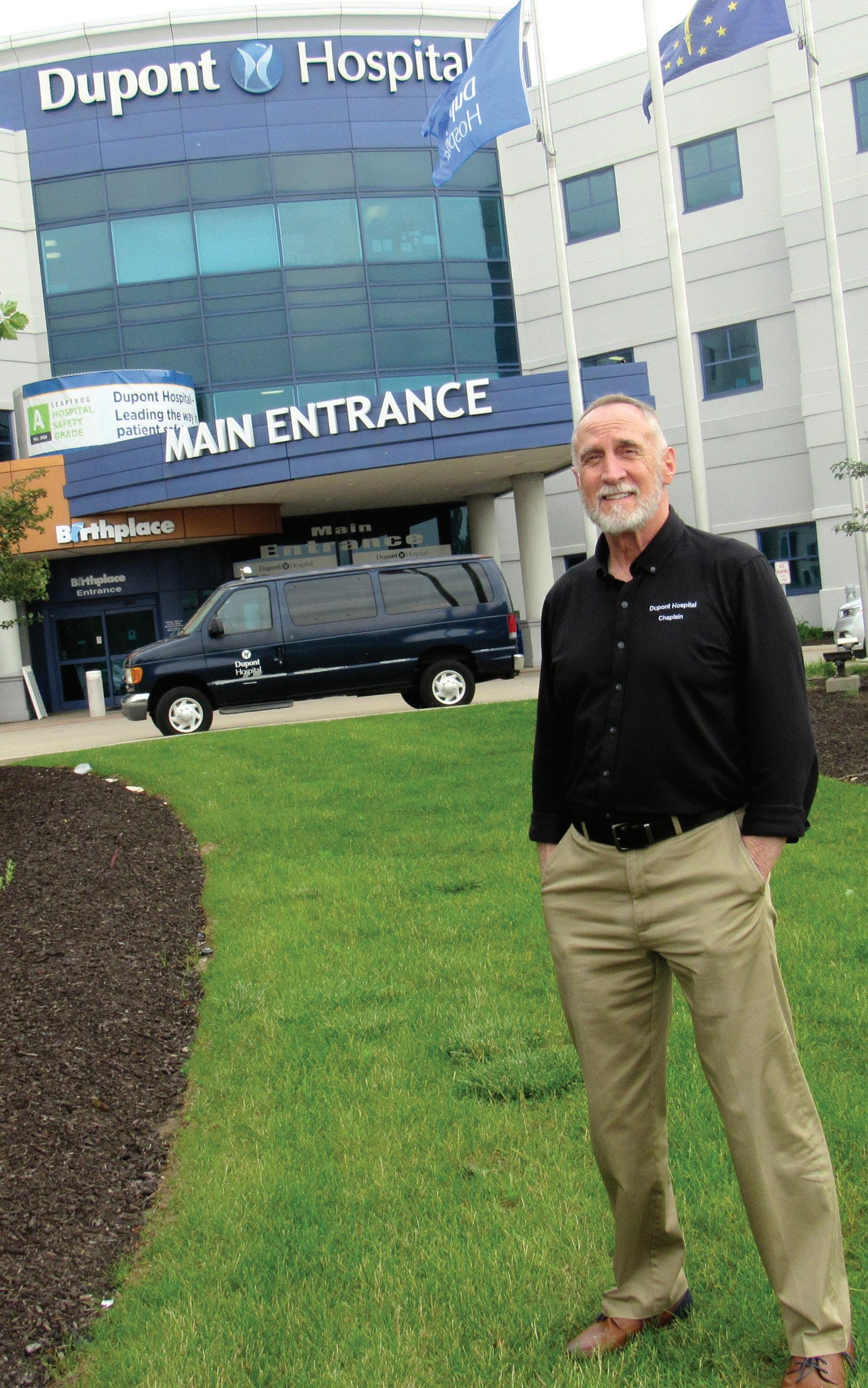
Presented by Better Business Bureau, serving northern Indiana, the awards honor ethical excellence in business and community leadership. The nomination period for the 20th annual Torch Awards for Ethics is open through midnight Sunday, July 13.
The Torch Awards are the most prestigious honor given by the Better Business Bureau. It recognizes local businesses, nonprofit organizations and individuals that
Iexemplify outstanding character, culture, customer care, and community involvement.
The community is encouraged to nominate eligible organizations and individuals through July 13. Nominees must be located within BBB Northern Indiana’s 23-county region and meet eligibility guidelines.
The 20th annual Torch Awards winners will be honored Thursday, Oct. 30, at the Allen County War Memorial Coliseum, Fort Wayne. Hosted

It’s easy! Simply find the Patriotic Cupcake on another page in this edition. Go online to www.SeniorLifeNewspapers.com and enter your information, the edition, date and page number you found it on. This will enter you for a chance to win a gift of $25.
by the BBB Charitable and Education Foundation, the event will feature networking, drinks, dinner, and an
inspiring awards ceremony dedicated to celebrating trust and integrity in northern Indiana’s marketplace.
For more information, contact Shannon Bearman at (260) 423-4433 or shannon@ northernindiana.bbb.org.
The Embassy held a superhero-themed volunteer appreciation event May 21, to honor and celebrate the important contributions volunteers have on the organization and its ongoing success.
As a nonprofit organization, the Embassy feels privileged to have a team of volunteers who help with a variety of tasks and roles that create a rich patron experience. This includes tasks, such as ticket scanning, ushering, helping with school field trips, serving on the board of directors and more.
Currently, the value of a volunteer hour is estimated at $34.79. Between Sept. 1, 2024,
and May 19, 2025, Embassy volunteers provided a remarkable 4,416 hours of service, resulting in a total financial contribution of $153,632.64 to the organization. This amount does not even account for the valuable time contributed by the dedicated board members or organ crew.
At the celebration, the organization recognized Richard Miller as the Volunteer of the Year. His journey began as a balcony usher and has expanded over the years to encompass a variety of roles, including ticket taker, Festival of Trees facilities helper and decorator attendant, and as an assistant with the setup and breakdown
of Middle Waves. He recently completed training in January for the Embassy’s education study trips, where he has been a facilitator for all three study-trip modules and was promoted to being a guide.
Miller is kind, helpful, and committed and travels 66 miles round trip to volunteer, and is always up for learning something new. In addition to his contributions at the Embassy, Miller also volunteers for several other community organizations.
During the annual volunteer event, 49 volunteers celebrated milestone anniversaries, ranging from five to 50 years. The organization made a special acknowledgment to Jane Black for her remarkable 50 years of volunteer service.

Brought To You By



(Online Entries Only) Entries Must Be In By Monday, July 14, 2025.

206 S. Main St. Milford, Indiana 46542
The top three volunteer recipients in terms of hours logged for the year were as follows:












The winner of the I Spy Contest for June is Rebecca Steffen from Elkhart. The ‘Camping Chair’ was located on page 15 in Senior Life Allen; page 2 in Senior Life Northwest; page 6 in Senior Life Elko and page 9 in Senior Life St. Joseph.
Allen County Public Library’s Library at Home provides free delivery of library materials to homebound patrons, and pop-up libraries at facilities throughout Allen County, where residents can sign up for a library card, check out materials, and more!
CONTACT US:
1. Richard Miller – 225 hours
2. Jerry Miller – 200 hours
3. Stacey Glass – 133 hours
For information about volunteer opportunities at the Embassy contact Mary Jo Hardiman, chief operating officer of Embassy Theatre at maryjo@ fwembassytheatre.org.
Visit fwembassytheatre.org for more information.
By CECIL SCAGLIONE
Mature Life Features
Consumer fraud experts estimate fraudulent telemarketers steal as much as $40 billion a year. More than half of that money is stolen from retirees living on limited income and finite savings. The 70-79 years of age group is the hardest hit senior phalanx, with an average loss of more than $49,000 each. Furthermore, not all scams, cons and frauds are reported to law enforcement because the victims are ashamed of making mistakes or are unaware they’ve been bilked. That means many billions more are lost to con artists in “pigeon drops,” home-repair schemes, bank-examiner scams and the like.
Almost half of the some 65,000 cases reported each year by the elderly are perpetrated by family members or fiduciaries who take advantage of their position in charge of the
elderly’s finances.
The other half is stolen by strangers who drum up scams, cons and frauds designed to convince their targets to hand over their money willingly and without worry.
As the nation’s senior population increases, so does the pool of available victims.
Telephones are the most common and most successful scam tool in operation today. Wireless technology allows scammers to call victims, without fear of detection, from anywhere in the world. The lottery or sweepstakes scam, countless “phishing” scams and various credit card ploys lead the way.
First of all, know that it is illegal to require prize winners to pay up front to receive their winnings.
But more importantly, never give such personal information as your Social Security number, credit-card account numbers, or banking information to anyone
who has called you. Just hang up.
Never contract with or allow unsolicited door-to-door sales or repair people inside your home without independent verification of who they are and who they work for. Check references or ask neighbors who they use for a service.
Shred all personal and financial information — any piece of paper that has your name, address and/or any financial account information.
Always be wary of any one who says you must decide now, or they’ll send a courier to pick up your check right now, or they need you to wire money.
Check on your senior neighbors, particularly those living alone, to keep them informed about scams and learn if they have any information to help you.
Call the police if you suspect you are being scammed. And make a police report if you have
been conned, no matter how embarrassed you may feel.
The Attorney General’s Office has some suggestions on how to protect yourself.
Any one of these warning signs should make you think twice before you provide personal information or send money:
• Unsolicited mail, e-mail or telephone calls.
• A promise that you will receive a large sum of money.
• Any effort to obtain personal financial information.
• You have to pay money first before you get money.
• You are told to wire money instead of using the U.S. Mail.
Whether it’s mail fraud or telephone fraud, chances are it will begin with an unsolicited contact from somebody you’ve never heard of.
There is never a good reason to give any caller your bank account, credit card, PIN or Social Security number.
Mature Life Features Copyright 2025

Adams Heritage
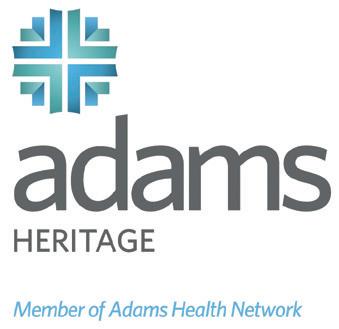
12011 Whittern Road, Monroeville, IN 46773 (260) 623-6440 • www.adamsheritage.org
Rehabilitation Unit, Skilled Licensed Nursing, Semi-Skilled Nursing Intermediate Care, Therapies: Speech, Occupational, Physical, Respiratory, Outpatient Therapy, Long Term Care, Temporary Care, Private/Semi-Private Rooms, Pet Visitation Allowed, Hospice Care. Medicare and/or Medicaid.
Adams Woodcrest
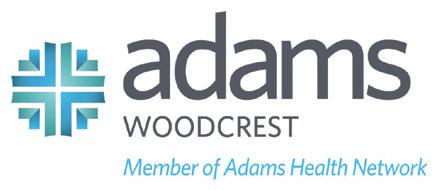
1300 Mercer Avenue, Decatur, IN 46733 (260) 724-3311 • www.adamswoodcrest.org
Assisted Living, Rehabilitation Unit, Alzheimer’s Unit, Skilled Licensed Nursing, Semi-Skilled Nursing, Intermediate Care, Therapies: Speech, Occupational, Physical, Respiratory, Long Term Care, Temporary Care, Private/Semi-Private Rooms, Pet Visitation Allowed, Hospice Care, Medicare and/or Medicaid.

300 East Washington Blvd., Fort Wayne, IN 46802 (260) 422-5511 • jmull@tgmsi.com
Assisted Living; 50+ Community; Pets Allowed; Medicaid Waiver; Private Rooms; Weekly Events; RCAP Program; Conveniently Located; 24/7 Nursing Staff; On-site Therapy; Downtown Lifestyle; Concierge Service; Smoking Area; Restaurant Style Dining
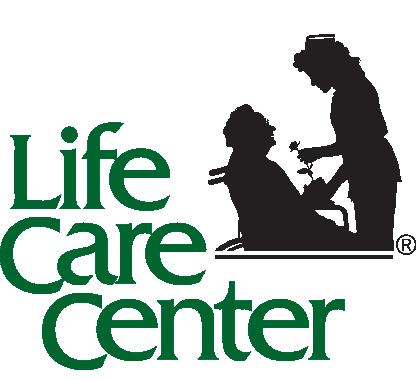

1649 Spy Run Avenue, Fort Wayne, IN 46805 (260) 422-8520 • www.lcca.com
Rehabilitation Unit, Alzheimer’s Unit, Skilled-Licensed Nursing Or Intermediate Care, Therapies: Speech-Occupational-Physical, Long Term Care, Respite Care, Wound Care, Outpatient Therapy, Medical Transportation, Medicare/Medicaid, Pet Visitation Allowed

Pointe Health Campus
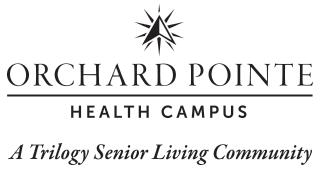
702 Sawyer Rd., Kendallville, IN 46755 (260) 347-3333 • www.orchardpointehc.com
Offering Memory Care, Assisted & Independent Living Apartments and Skilled Services. We’ll meet you with the appropriate level of care wherever you are — whether you’re fully independent or looking for additional assistance.
Call us.

14409 Sunrise Court, Leo, IN 46765 (260) 627-2191 • www.thecedarsrc.com
Assisted Living, Skilled Licensed Nursing, Semi-Skilled Nursing Or Intermediate Care, Therapies: Speech-Occupational-RespiratoryPhysical, Long Term Care, Temporary Care, Private/Semi-Private Rooms, Pet Visitation Allowed, Hospice Care, Medicare and/or Medicaid

S. Anthony Blvd., Fort Wayne, IN 46816 (260) 447-1591 • www.ABetterWayofLiving.org
Assisted Living, Rehab Unit, Alzheimer’s Unit, Skilled Licensed Nursing, Intermediate Care, Therapies: Speech, Occupational, Respiratory, Physical, Long Term Care, Temporary Care, Private/Semi-Private Rooms, Pet Visitation Allowed, Hospice Care, Medicare and/or Medicaid, Outpatient Therapy of Fort Wayne


By TOM MORROW Mature Life Features
In the 1930s, before sea-going aircraft carriers became the dominant weapons platform of the U.S. Navy, giant dirigible (Lighter-Than-Air) ships, also known as Zeppelins, operated on both coasts.
The rigid vessels served as mother ships for up to four small fighter/scout planes that were launched and harbored aboard the great helium-filled airships.
The Curtiss F9C Sparrowhawk was a light 1930s biplane fighter aircraft known as a parasite fighter designed to be deployed from a dirigible or bomber. It was launched primarily by the dirigibles USS Akron and USS Macon.
The concept of fixed-wing aircraft being carried and launched from dirigibles was developed during World War I by the British to to engage German LTA Zeppelins. The
increasing use of airships by nations led to variations on the idea of using aircraft with them.
This was before the advent of radar. Their major use was for reconnaissance, extending the reach of the airship beyond the horizon, and to provide the airship with a degree of self-defense.
In the late 1920s, the U.S. Navy began experimenting with its airships, initially using the German-built USS Los Angeles as a platform for testing the concept of the so-called parasite aircraft. The success of these tests led to the decision to build two new airships — the Akron and Macon — that were capable of accommodating an on-board air group of specially designed aircraft, which resulted in the Curtiss Sparrowhawk.
Although designed as a pursuit plane or fighter, the Sparrowhawk’s primary duty was reconnaissance. It was

ADAMS WOODCREST
1300 Mercer Avenue
Decatur, IN 46733
Phone: (260) 724-3311
www.adamswoodcrest.org
Independent Living, Cottages, Villas, Apartments, Residential & Assisted Living, Short Term Rehab, Healthcare & Dementia Care, Skilled & Intermediate, Long Term Nursing Care, Life Enrichment Activities, Fitness Center Membership

THE CEDARS
14409 Sunrise Court
Leo, IN 46765
Phone: (260) 627-2191
www.thecedarsrc.com
Complete Retirement Amenities: Skilled & Intermediate
Long Term Nursing Care, Assisted & Residential Apartments, Total Rehab Unit, Villa Of The Cedars With Condominium Homes - “Come To The Country”
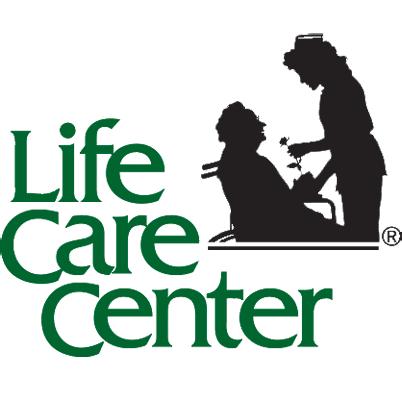
LIFE CARE CENTER OF FORT WAYNE
1649 Spy Run Avenue
Fort Wayne, IN 46805
Phone: (260) 422-8520
www.lifecarecenteroffortwaynein.com
Newly remodeled facility, top-of-the-line service for rehab patients. Rapid rehab program, separate wing with 30 rehab suites — private single bed for short-term patients. Medicare, Medicaid & insurances accepted.
chosen for service aboard the airships because of its small size, although its weight, handling, and downward visibility from the cockpit were not ideal.
The maximum capacity of the airship’s hangar was five aircraft, one in each hangar bay and one stored on the trapeze but the Akron’s two structural girders obstructed the aft two hangar bays, limiting her to a maximum complement of three Sparrowhawks. The Macon carried four airplanes.
The Sparrowhawk’s undercarriage was replaced with an external 30-gallon fuel tank, significantly increasing its range.
To achieve launching and recovery from the airship in flight, a skyhook system was developed. The Sparrowhawk had a hook mounted above its top wing that attached to the cross-bar of a trapeze mounted on the carrier airship. For launching, the biplane’s hook was engaged on the trapeze

New
morning
Tuesday, April 4, 1933, killing 73 of the 76 crewmen and
volved the greatest loss of life in any airship crash.
inside the airship’s internal hangar. The trapeze was lowered clear of the hull into the airship’s slipstream and, engine running, the Sparrowhawk would then disengage its hook and fall away from the airship.
The accident
fly underneath its mother ship, climb up from below, and hook onto the cross-bar.
More than one attempt might have to be made before a successful engagement was achieved, for example in gusty conditions.
For recovery, the biplane Continued on page 13

3136 Goeglein Road
Fort Wayne, IN 46815
Phone: (260) 749-9655
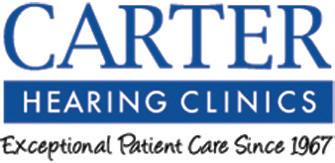
CARTER HEARING CLINICS 1335 Getz Road, Fort Wayne, IN 46804 NORTHEAST: 3136 Goeglein Rd., Suite A Phone: (260) 436-6400 or (877) 436-6401
www.carterhearingclinics.com
• Creating A Higher Standard of Care
• Board certified audiologists by the American Board of Audiology serving Fort Wayne since 1967.
• Offices located in Fort Wayne, Auburn and Angola. PROVIDING
• Hearing Evaluations, Hearing Aids, Assistive Listening Devices and Auditory Training
• FREE TRIAL HEARING AID PROGRAM

PO Box 10179
Fort Wayne, IN 46850
Phone: (260) 422-3296
www.homeboundmealsfw.org
Homebound Meals, Inc. volunteers deliver
Fort
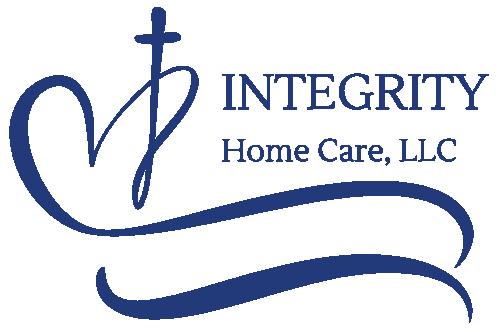
INTEGRITY HOME CARE, LLC 813 W. Cook Road, Suite 1
Fort Wayne, IN 46818
Phone: (260) 452-9691
ajones@integrityhhc.com
“Stay Home With Integrity.” Providing assistance to those in need in the comfort of their own home.

BRIGHTSTAR 333 E. Washington Blvd.
Fort Wayne, IN 46802
Phone: (260) 918-0933
www.brightstarcare.com/fort-wayne
Enthusiastic, kind personal level client care connection, 24/7 support enables clients to check
By CECIL SCAGLIONE
Mature Life Features
When you’ve been caught napping, it could mean you’ve been sleeping on the job, missed the moment of decision, or was simply unprepared.
But to many in the know, naps are good for you. A short mid-day “nooner” can shed stress and restore your strength to face the rest of the day.
Much of the world claims napping spoils their ability to sleep at night. Many medical experts concur and support the practice of getting a good eight hours sleep every night to maintain your mental health and physical stamina.
Insomnia is a well-known term covering a wide range of sleep issues. Surveys blame lack of sleep for costing several billions of dollars in decreased economic output because of memory lapse, dulled concentration, and inability to complete everyday tasks.
Sleeping poorly is not a sign or symptom of getting old. Studies indicate poor sleep is a result of poor sleep habits.
A widespread cause of a wrecked night sleep is noise that can startle you awake. A widespread cure for this is white noise, a constant comfortable sound, such as bubbling water or a whir of a fan to counter the sharp sounds.
Setting the room temperature at a constant and comfortable level also helps you get a good night’s sleep. As does darkening the room with blinds and curtains to keep out the light of passing vehicles and the rising sun.
When it comes to your bed, think of the three bears’ beds — one was too soft, the other too hard and the third “just right.”
Getting a good night’s sleep depends on your bed being “just right.” Today’s array of pillows, cushions, mattresses and adjustable beds will help you find the most comfortable night of sleep.
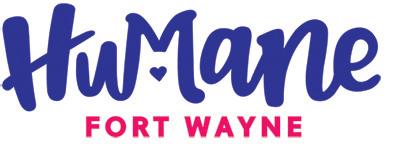
HUMANE FORT WAYNE IN-HOME SERVICES
901 Leesburg Road
Fort Wayne, IN 46808
Phone: (260) 744-0454
www.humanefortwayne.org
This FREE program helps seniors care for their pets. Services include grooming, walking, waste clean-up, wellness checks, transportation and more.
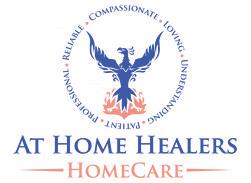
AT HOME HEALERS HOMECARE LLC
7230 Engle Road, Suite 205
Fort Wayne, IN 46804
Phone: (260) 702-0897
care@athomehealershc.com
www.athomehealershc.com
Personalized centered care: post surgery, Alzheimers & Dementia specialized support, Veteran & personal assistance (bathing, dressing, grooming), light housekeeping, daily/weekly meal prep, appointment transportation. No minimum hourly contract, 24/HR care, two nurse owned & operated, FREE in-home assessment!

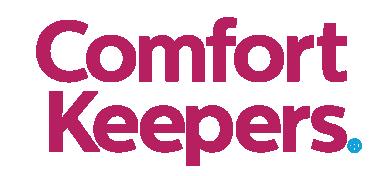
COMFORT KEEPERS
3182 Mallard Cove Lane
Fort Wayne, IN 46804
Phone: (260) 484-5858
MollyTritch@comfortkeepers.com
Comfort Keepers provides award winning in-home care for seniors and other adults in need of assistance with daily activities.
Your daytime lifestyle also affects your night’s sleep. Discuss your issues with your family doctor before making any changes, but your schedule and diet can affect how you drop off at night. Waking up at the same time every day may help solve your
sleepless problem. Is dropping off to sleep — taking a nap — in front of the television set affecting your ability to get a good night’s sleep?
Late-night snacks could be keeping you awake.
Physical exercise is a good
Continued from page 12
Once the Sparrowhawk was caught, it could then be hoisted by the trapeze into the airship’s hull, the engine being cut as it passed the hangar door.
Pilots soon learned the technique and it was described as being much easier than landing on a moving, pitching and rolling aircraft carrier. To increase their scouting endurance while the airship was on over-water operations, the Sparrowhawks would have their landing gear removed and replaced by a fuel tank. When the airship was returning to base, the biplanes’ landing gear would be replaced so that
they could land independently again.
For much of their service with the airships, the Sparrowhawks’ effectiveness was greatly hampered by poor radio equipment and they were effectively limited to remaining within sight of the airship.
In 1934, new direction-finding sets and voice radios were fitted that allowed operations beyond visual range, exploiting the extended range offered by the extra fuel tanks and allowing the vulnerable mother ship to stay clear of trouble.
These Navy’s airships lasted from the late ‘20s until the 1960s.
sleep-inducing practice. A walk, swim or bike ride, tai chi or yoga session, or visit to a local gymnasium for a light workout all help loosen up your muscles so you can fall into relaxing sleep at night.
Mature Life Features Copyright 2025
While the use of the large dirigibles was short-lived, the smaller, three- and four-passenger- crew blimps that did not have a rigid airframe like the dirigibles served successfully as coastal patrol aircraft during World War II, sinking large numbers of German submarines while protecting Allied shipping on the Atlantic.
The three large Navy dirigibles airplane carriers, the USS Los Angeles, the USS Akron, and the USS Macon, became a footnote in history with the advent of improved radio communications and introduction of radar.
Mature Life Features Copyright 2025

REDOXGold
Ernie Chupp 26659 CR 54 Nappanee, IN 46550 (574) 773-9404
realredoxresults.com (password: redox)
In Pain? Experience immediate, targeted relief and recovery. Relieves ailments like joint discomfort, kidney problems, depression, migraines, fatigue, cholesterol, allergies, auto-immune and more.


www.hoosierpt.com
Medicare Assignment Accepted “Personalized Care”



By ROD KING
Model aviation enthusiasts know about the National Model Aviation Museum in Muncie, but it’s not necessary to be a model airplane buff to enjoy a self-guided tour through the history of this popular hobby.
Grandchildren will particularly enjoy this museum. It’s chock full of models of all shapes, sizes, colors and configurations. Some are propelled by rubber bands and miniature engines. Some are controlled by wires and others by remote control.
There are some neat displays of equipment and hardware on loan to the museum by NASA and were used in the space program, a drone collection and one room is a hands-on gallery with computer-operated flight simulators and games. Youngsters are encouraged to make and fly paper airplanes and to make a paper cone fly in a vertical wind tunnel.
The museum is separated into four major areas, starting with more than 200 years of aeromodeling history, tracing the important role models played in the development of manned flight.
Next is the free flight section, which is the oldest form of the hobby featuring rubber band powered models and handlaunched gliders.
A large section focuses on planes controlled by persons manipulating them by wires, making them do loops and dives while flying in a circle. The last
section is for models controlled by radio frequencies.
Nestled in the middle of everything, take a step back in time by entering a circa-1950s hobby shop full of boxed stick and paper models, a mannequin sales clerk and an antique cash register.
The Academy of Model Aeronautics History was founded in 1936 and the National Model Aviation Museum was established in 1978 in Virginia, near Washington, D.C. It was relocated to Muncie in 1993. Model plane enthusiasts from across the country flock there in July and August for the annual national competition, which includes combat flying, pitting two participants attempting to cut a streamer from their opponent’s plane; landing planes on a mock aircraft carrier; skill flying and more.
The 1,000-acre site has eight fly sites specifically designed for a variety of competitions. They also have facilities for creative flying, racing featuring permanent pylons, speed and aeromodeling.
To take in some fancy flying, be sure to get to the museum Aug. 9-16 for the World Championships of control-line models.
To get to the National Model Aviation Museum, drive south on I-69 to exit 234 and follow S.R. 32 into Muncie. When you reach US 35, turn south and follow it to Memorial Drive. Then turn left and travel a short distance to the museum on the right side of the road.
Hours through August are from 10 a.m. to 4 p.m. Monday through Saturday.
Admission for adults is $8, $4 for youths, and kids under 6 are free. Call (800) 435-9262 for more information or visit modelaircraft.org.
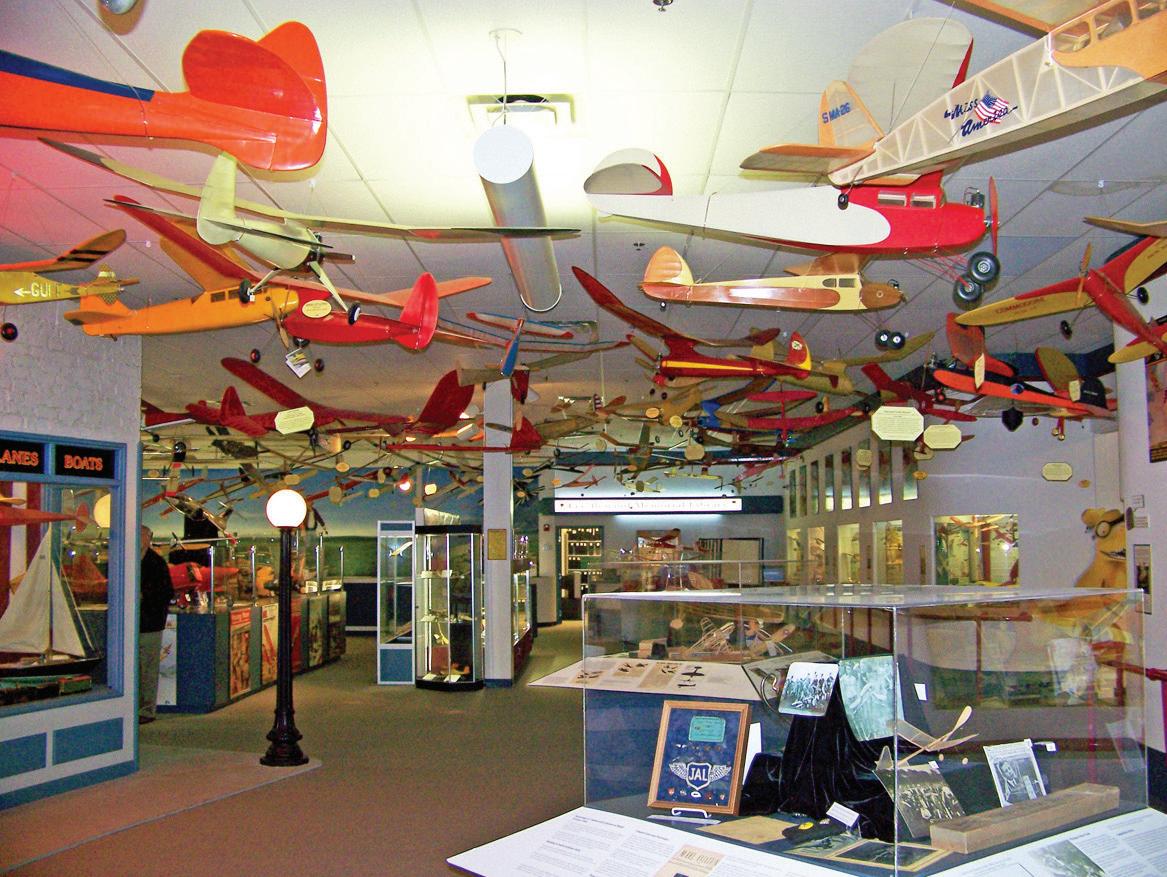
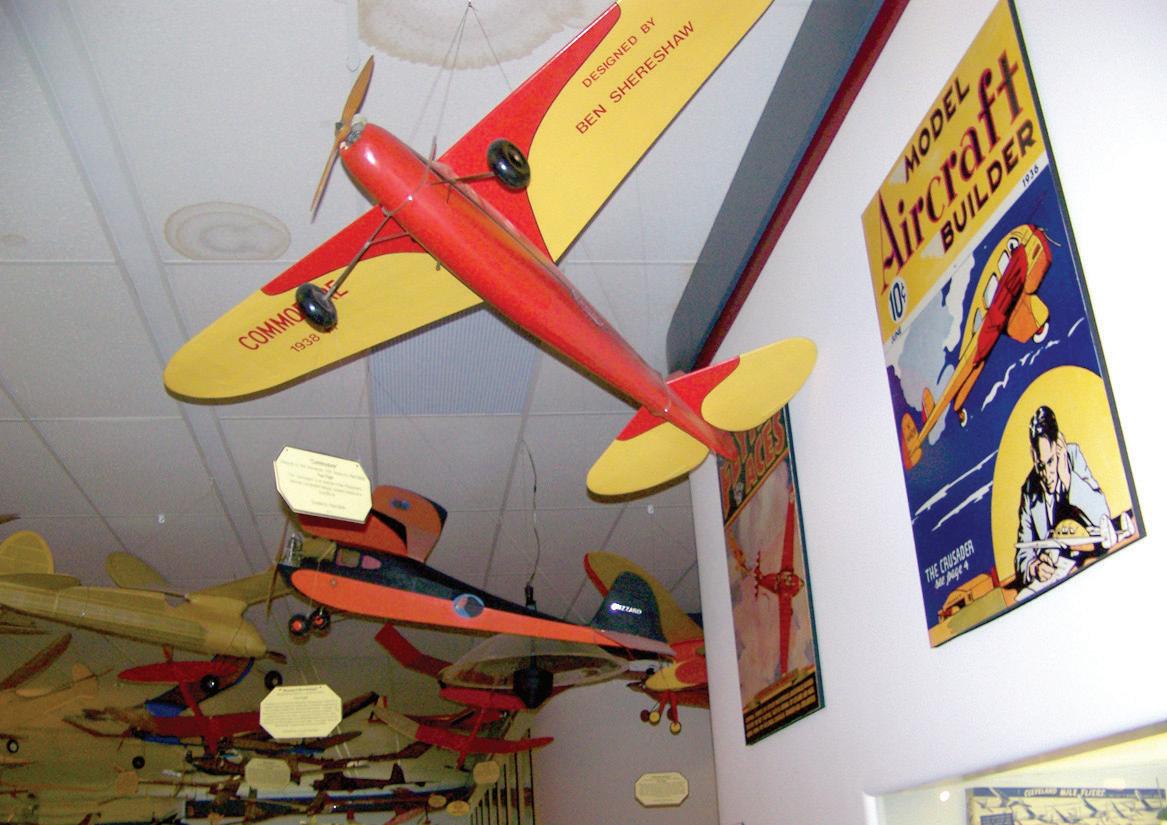
Oct. 28-31,
March 3-9,
7-11,
29-May
8-13,
June 22-25, 2026
Steve and Sheila Magsamen, Tour Managers Decatur & Fort Wayne Departures
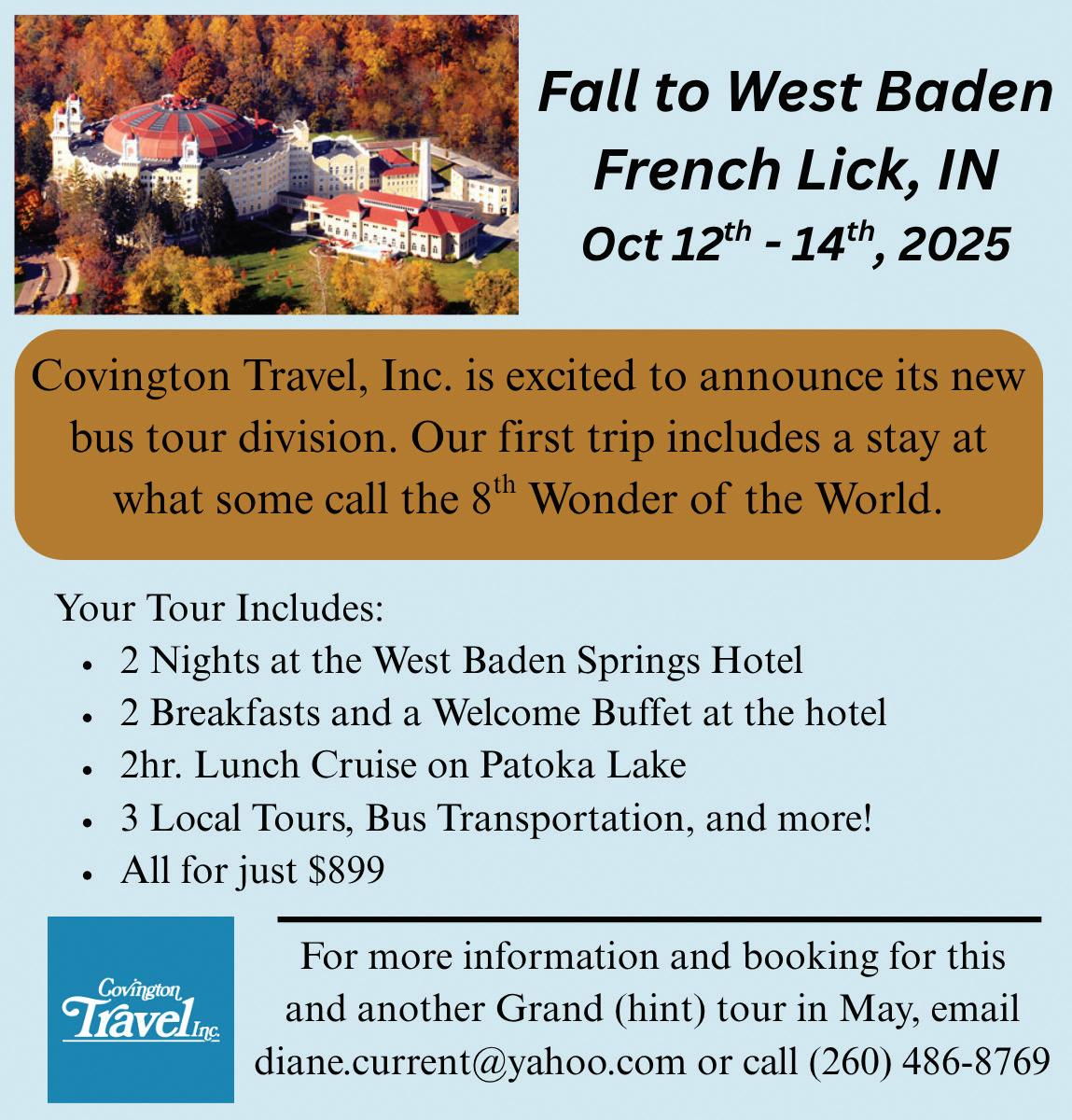

By TOM MORROW Mature Life Features
While history books dedicate much of the credit for our nation’s interstate highway system to Dwight D. Eisenhower, who was our nation’s president from 1953 to 1961, much of the responsibility for it has to be attributed to automotive pioneer Henry Ford.
Before the emergence of the Ford’s Model T, most Americans had never been more than 50 miles from home. While this horseless carriage was affordable for the average working family, there were a limited number of roadways on which to travel in the early 1900s.
The few roads that existed in the Southwestern and Western states were nothing more than a two-track mud or dusty pathway cut through the landscape connecting one village or town with another.
The first major highway in the U.S. was built in 1920 by the Old Trails Road Association, a private organization that built a Missouri roadway connecting St. Louis and Kansas City. The association’s president was Jackson County Judge Harry S. Truman
of Independence, Mo.
In 1926, the association determined roads be split into several numbered highways throughout the nation. The portion of the Old Trails Road from Chicago to Los Angeles would later become the iconic US Route 66.
The Lincoln Highway became the first coast-to-coast roadway running from New York’s Times Square to Los Angeles. The Old Trails Association proposed automobile manufacturers donate 1% of their annual revenue to building the various national roads. All the major company heads complied except one — Henry Ford.
He declared highways were the responsibility of the national government, not private enterprise. Ol’ Henry was a known miser. He “made” money, he didn’t spend much of it.
In 1919, the U.S. Army mounted a car-and-truck convoy headed by Lt. Col. Dwight D. Eisenhower to travel the length of the new Lincoln Highway to determine viability of the road.
Eisenhower reported that the Lincoln Highway through Pennsylvania, Ohio and Indiana was in “fairly good shape” and much of it paved, but the roadway west

from Illinois was mostly a dirt trail. The road became nearly impassable during bad weather, especially rain, leaving much of it little more than a deep-rutted roadway.
These findings encouraged Congress to pass the Federal Aid Highway Act of 1921 that increased matching state funds. Until roads were built in the various western states, the old
By CECIL SCAGLIONE
Mature Life Features
Summertime: While the living might be easy, it can be hard on your skin.
Stretching out beside the pool, heading to the beach, donning shorts and tank tops, and cavorting with the kids out in the park all damage your skin and increase your chances of getting skin cancer, the most common form of cancer in this country.
More than 3 million people — young and old — are treated every year for two types of skin cancer, basal cell and squamous cell carcinoma, which are rarely life-threatening.
Melanoma, a more serious form of skin cancer, is diagnosed in more than 100,000 people a year.
Overexposure to the sun at any time of year wrinkles your skin and makes it less elastic. What a lot of people are unaware of is that the sun’s ultra violet rays still are damaging on cloudy days.
The best way to protect your skin and prevent cancer is to limit your time in the sun. When outdoors, head for shady spots out of direct sunlight. Look for those same spots on cloudy, overcast days. Use sunscreen. A neighbor long ago learned that her dermatologist dabbed on sunscreen every morning to protect her skin from sun damage. The higher the SPF number on the label, the better. Wear sunglasses, the kind that wrap around the side of your head, to protect your eyes from sun damage.
While skimpy clothing may appear attractive and comfortable, they expose your skin to sunlight, so wear long sleeves and slacks, and a hat or cap with a brim.
You might notice that folks in some countries carry an umbrella to shield them from the sun. It’s called a parasol, which can be translated literally in some tongues as “for the sun.”
Sunbathing is out, even under tanning beds in salons because they damage the skin with ultra violet rays the same way the sun does.
Contrary to how we view a buff and bronze body, there’s no such thing as a healthy suntan.
If you spot a strange freckle or spot appearing anywhere on your skin, visit your family doctor immediately.
Mature Life Features Copyright 2025
By JIM CARPENTER Guest Writer
I suppose I have my share of troubles.
Getting old kind of guarantees that.
Oregon Trail crossed what is now the states of Kansas, Nebraska, Wyoming, Idaho and Oregon.
After the Army convoy excursion, young Ike vowed to do everything he could to improve the nation’s roadways. Years later, as President Eisenhower, he oversaw the creation of our modern interstate highway system, fashioning after the German autobahn he saw at the end of World War II.
Germany’s autobahn was started in the mid-1920s but construction did not make progress beyond the planning stage due to the Great Depression. Its first section was completed between Cologne and Bonn and officially dedicated Aug. 6, 1932, by Konrad Adenauer, Lord Mayor of Cologne and future Chancellor of West Germany.
The Dwight D. Eisenhower National System of Interstate & Defense Highways, using the German scheme as a network of controlled-access highways, connects most principal cities across the nation.
The Eisenhower administration began construction 1956 and was proclaimed completed in 1992. The cost was approximately $114 billion (more than $520 billion today).
The Interstate system uses a numbering scheme in which

primary Interstates are assigned one- or two-digit numbers and shorter routes are assigned three-digit numbers where the last two digits match the parent route.
Much of the Lincoln Highway still exists as US 30, which parallels I-80 connecting Lincoln Park in San Francisco with Times Square in New York City.
One-quarter of all miles driven in the U.S. use the Interstate network of 48,440 miles. Because of its heavy use, especially by truck traffic, the system is constantly under restorative construction.
Thanks to Ike, our lives have been greatly changed because of the Interstate. It was good for travelers and bad for the dozens of small towns and cities which were by-passed. And thanks to Henry Ford, who made the automobiles that forced the government to build our highways.
Mature Life Features Copyight 2025
Truth be told, influence is given. I cannot drive, my eyes are weak, but while the body may function less, the brain still actively may seek.
I feel my years of psychological leaning, coupled with a philosophical bent, have somehow conspired to provide me, with
There are times I find, just staying home, might be the best option that I’ve got. But whether it is real, or my brain is somehow faking it, I am finding peace in staying home. Even to the point of liking it.
a worthwhile poetic intent. Not for thee but for me. (Gosh! What a fun thing to say.)
Both a purpose and a challenge, that I might play with every day.
I only ask that you forgive my ramble.
It seems to be the thing I do. While I write primarily for myself, I am most happy to share it with you.
JULY 28-AUG 2: NEW YORK: NIAGARA FALLS, 1000 ISLANDS Maid of the Mist Boat Ride, George Eastman Estate, 5 hr Island Boat Cruise w/Bolt Castle & Rock Island Lighthouse, Buffalo Double Decker City Tour & Much More AUG 12-15: FOUR DAY MYSTERY ???? AUG 21-22: Say oHIo to AKRON, Stan Hywet Hall, Neil Diamond Tribute Show, Hartville Place/ Flea Market, Harry London Candies, Don Drumm Studio/Gallery SEPT 2-13: SOUTHWEST CANYONLANDS Utah & Arizona: Zion, Bryce, Grand Canyons, Arches, Monument Valley Jeep Tour, Colorado River Light Show Cruise, Capitol Reef Nat. Park, Lake Powell Cruise, Indian Pueblo Culture Center, National Cowboy Museum & More SEPT 24-25: TWO DAY MYSTERY
By MONA HARTER District Manager, South Bend Social Security Office
Do you receive Social Security Disability Insurance or Supplemental Security Income? If so, you should know that we are required by law to review your case to verify that you still have a disabling condition that prevents you from doing substantial work. We call this process a Continuing Disability Review.
We will send you a notice telling you when it is time to review your medical condition and keep you informed about your benefit status. How often we review your medical condition depends on whether your condition is likely to improve.
We’ll normally review your case:
• Within six to 18 months
after our decision on your disability application if your medical condition is expected to improve.
• Every three years if medical improvement is possible.
• Every seven years if medical improvement is not expected.
If you get disability benefits you can complete and submit the Medical Continuing Disability Review Report (SSA-454) online.
The online option is available to adults who receive SSDI, SSI, or both, and do not have a representative payee. To complete the form online, sign in to your personal my Social Security account and select “Complete Your Continuing Disability Review.” If you do not have an account, visit ssa.gov/ myaccount to get started.
If you do not have a per-

REVIEW ONLINE
Those who receive Social Security Disability Insurance or supplemental security Income can review their case online by submitting the Medical Continuing Disability Review Report. Photo provided by the Social Security Administration.
sonal my Social Security account, you can fill out and print the SSA-454 at ssa.gov/ forms/ssa-454-bk.pdf. You can
mail or make an appointment to take your completed form to your local Social Security office.
Please share this information with your friends and loved ones who receive SSDI benefits or SSIs.
By CECIL SCAGLIONE
Mature Life Features
If you don’t have a will, write one out right now.
While its legality may be questionable because laws differ from state to state and country to country, you’ve at least made your wishes known regarding the distribution of your stuff after you die.
This act of doling out your worldly goods might also get you started on the road to establish-

ing a legally sound estate plan that will make life a lot easier for your family and friends when you pass away.
If you do have a will, and an estate plan, take a look at it to see if anything should be changed. If one of your children has died of some disease or disaster, you might have to make some adjustments.
The same might be necessary if you’ve remarried, whether after a divorce or the death of your previous spouse. Or if someone
originally included in your plans has fallen out of favor.
A will signed by you and witnesses is simple to prepare. Think of who should get what and write it down. It can be as simple as stating your assets should be left to your spouse. If he or she has already passed away, you can designate how your estate should divided among your children.
A will establishes your wishes for the handling of your property when you die rather than having the state distribute it.
If you feel matters are getting
complicated, contact an attorney familiar with estate planning.
Another important document you should prepare is a living will, which advises your family and medical staff how you wish to be treated when you no longer can speak for yourself. And you’ll want to give a person power of attorney to make those decisions for you.
Which leads to another decision to make – giving someone you trust durable power of attorney to handle you financial matters when you no longer
are able to.
After all of this is in place, it requires regular review to make sure your list of assets are up to date. Have you sold your house or your stamp collection? Are all retirement accounts and insurance policies accounted for?
Also make sure the location of your documents and safety deposit boxes along with a list of all your computer passwords is made available to the individuals who will be taking care of you and your estate.
Mature Life Features Copyright 2025






There are many more reasons why Ness Bros. continues to work and help clients with senior relocation and downsizing.
Case Study No. 5: Dee
After Dee’s husband passed away, she wanted to move to Arizona to be closer to her family. Ness Bros. was able to assist Dee in sorting through what items she wanted to take to Arizona, items to donate, items to discard, and were able
to sell the remaining personal property as well as real estate so she could accomplish her goal. Dee was able to be in control of the entire process without relying on friends and family. She currently lives near her children and enjoys her time with the grandkids.
Case Study No. 6: Toni
Toni was in her 70s and living well on her own until the day she tripped on a rug and hit her head on a door handle,

which caused a blood clot on her spine that paralyzed her from the neck down. Unfortunately, she did not have a power of attorney or a will and her daughter was already living in assisted living facility with health problems of her own. Her next closest relative was living out of state and not in a position to provide the time and resources that Toni was needing. Unfortunately, after the accident she was unable to stay in her home and moved to assisted living. In order to qualify for Medicaid, she was required to liquidate her assets. Ness Bros. was able to quickly facilitate the sale of her real estate and personal property to help her through this difficult situation, so she could qualify to receive the care she needed. Contact our senior relocation team to get help and answers to your questions on right-sizing. We’re here to help you stay positive throughout this process.
Reach out to our relocation specialists at (260) 459-3911 in Fort Wayne or (260) 3563911 in Huntington. You can also contact us through our website, NessBros.com, or stop in one of our offices, located at 3344 Mallard Cove Lane, Fort Wayne, or 519 N. Jefferson St., Huntington.